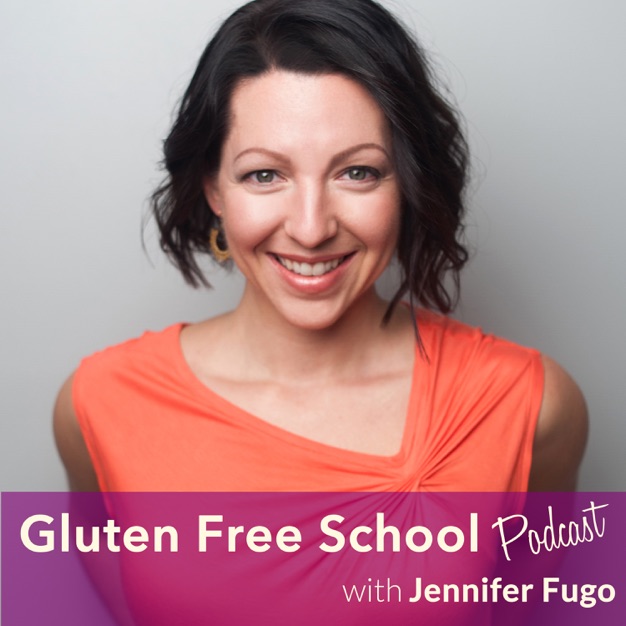
Gluten Free School Podcast
Jennifer Fugo, MS, CNS
Join your host clinical nutritionist Jennifer Fugo for the Gluten Free School Podcast where she explores all aspects of health and functional nutrition. No matter whether you're living with gluten intolerance, autoimmune disease, chronic fatigue, hypothyroidism, food sensitivities, and brain fog, you'll discover actionable interviews and tips to simplify healthy living. The goal is to empower YOU to have meaningful conversations with your healthcare practitioners and take the wheel to drive your health in the direction you ultimately want to go! Follow along as Jennifer and her guests demystify complicated health concepts so that you (the patient) can finally understand them.
- 14 minutes 40 secondsHow Much Sugar Is Too Much? (Here’s How To Tell): GFS Podcast 101
If you’ve ever wondered “How much sugar is too much sugar?“, you’re in for a treat!
Before I can break that down for you, you have to know how to figure out the amount of sugar in your food. That’s the most complicated part of this process.
You’ve probably noticed that all of the nutrition information is listed in grams. But do you even know what a gram of sugar looks like or what it means for your health?
Probably not. Most people don’t have any idea.
That’s because a gram isn’t a tangible real-life measurement that you use within the cooking world (unless you’re weighing your ingredients).
In the previous podcast (LISTEN HERE), I shared that you are exposed to 17 weeks of sugar conditioning from Labor Day to the week of Christmas here in the US.
A big piece of the problem is that information on food labels is intentionally unclear or confusing. It leaves you unsure of what’s healthy and often misleads savvy shoppers into believing something is healthier than it is.
One of the biggest “unhealthy” foods includes dried cranberries that have been marketed heavily as a healthy alternative. In reality, they’re a sneaky way to increase sugar content to your food.
How To Translate Grams Of Sugar To Something You Understand
So let’s go back to my point about what a gram looks like!
First of all, ingredient lists are created by ranking ingredients in a product. The list is written in descending order starting with the ingredient that the product contains the most of.
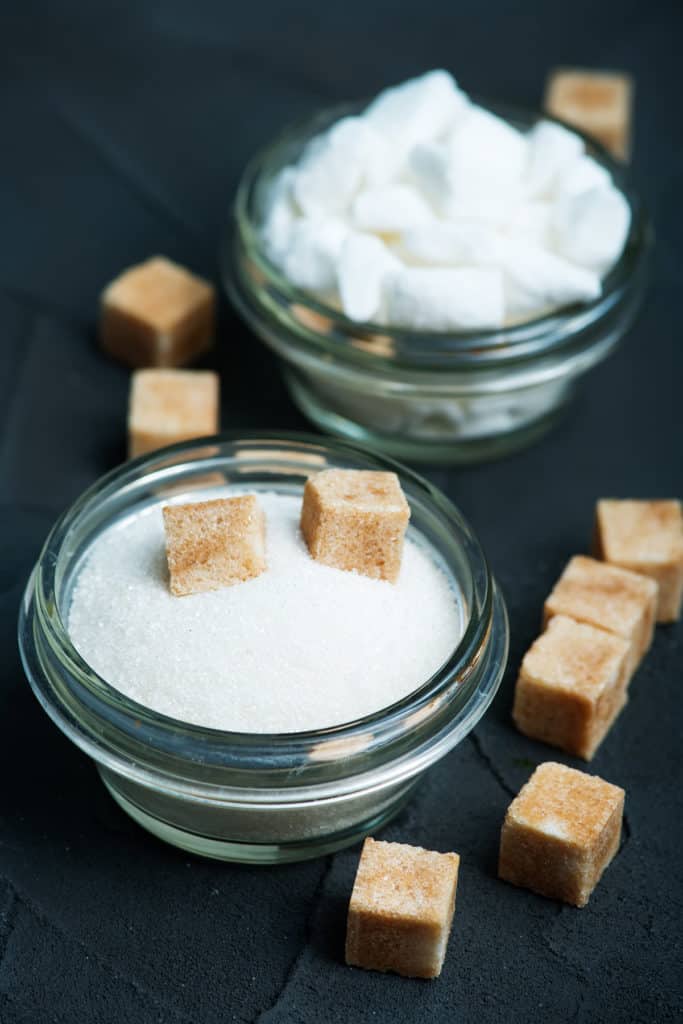 Sometimes companies will use several different types of sweeteners so that they show up lower in the list. This is one of the misleading tactics to make you think that there’s not that much sugar in the product.
Sometimes companies will use several different types of sweeteners so that they show up lower in the list. This is one of the misleading tactics to make you think that there’s not that much sugar in the product.If you have any hopes of outsmarting crafty marketing, here’s what you need to do…
Start by finding the total grams of sugar in a single serving.
Take the total number of grams of sugar and divide it by 4.
That will tell you the number of teaspoons of sugar in a single serving.
Because you know what a teaspoon of sugar is.
Discovering that your favorite drink or snack or dessert has way more sugar in it than you thought is, frankly, upsetting.
Especially when you thought that you were making a healthier choice.
And FYI — more natural sweeteners like honey or maple syrup used in Paleo products and baked goods aren’t necessarily better. They’re still sugar.
They may not be as processed, but they certainly have an effect on your body, its hormones, your gut, and other systems.
Don’t be shocked if you discover that even the “natural sweeteners” can trigger your sweet tooth.
I’ve worked with a lot of clients who were misled into thinking that they could eat all of the paleo brownies and cookies they wanted because they used natural sweeteners.
How Much Sugar Is Too Much In Your Diet?
Wondering how much sugar is too much is a great question. It means you’re aware and concerned about the effects that excess sugar has on your health.
First, you should know that the answer to this question is largely based on added sugar in your diet.
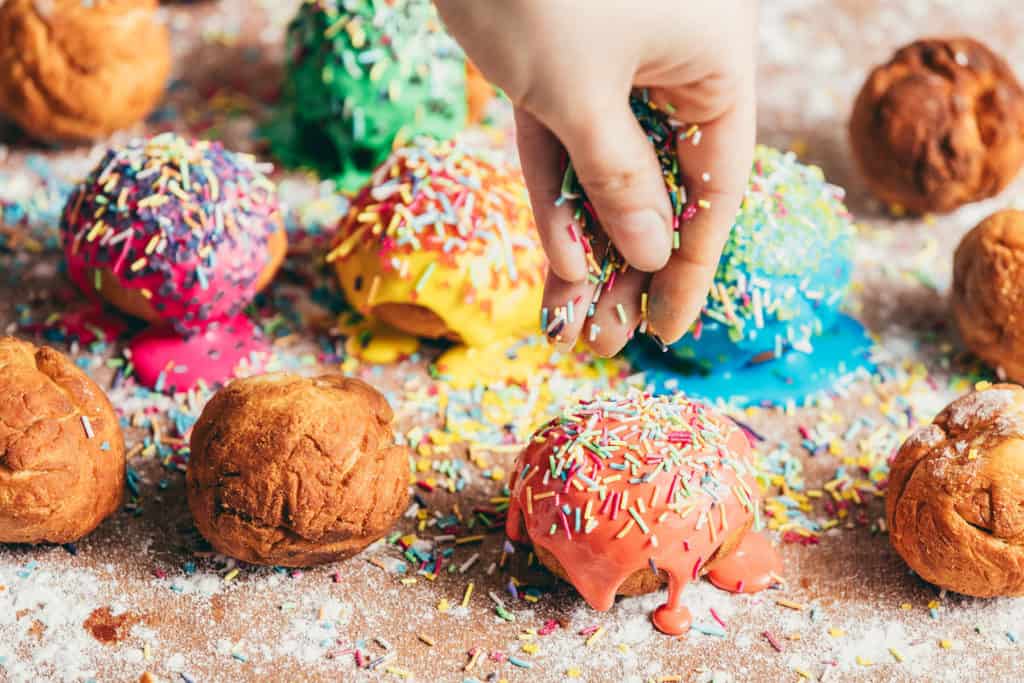 That means, health organizations don’t care how much fruit you consume in a day. The sugars that naturally occur in them would be considered natural sugars… not added.
That means, health organizations don’t care how much fruit you consume in a day. The sugars that naturally occur in them would be considered natural sugars… not added.However, they would consider fruit juice crystals, honey, maple syrup, or coconut palm sugar in a food product to be added since those sugars were not naturally occurring, but clearly added (which you can verify on the ingredient list or a recipe).
According to the American Heart Association, they keep a pretty tight leash on added sugar.
Women should not exceed 6 teaspoons of added sugar, while men should not exceed 9 teaspoons per day.
(Isn’t it funny that they specifically list this information on their site in teaspoons, but know darn well that you probably don’t know the grams-to-teaspoons conversion that I just shared with you.)
I’d recommend tracking the amount of added sugar to your diet for three days.
Each day, tally the total grams of sugar you’ve eaten (remember to account for serving sizes!!!). Then divide that number by four so you know the number of teaspoons.
Check out your favorite bars and other products that you buy and see how they stack up!
Do Carbs Count Into Your Sugar Intake?
The short answer is YES… carbs count.
I want to be clear that in no way am I suggesting that carbs are bad and that you should avoid them.
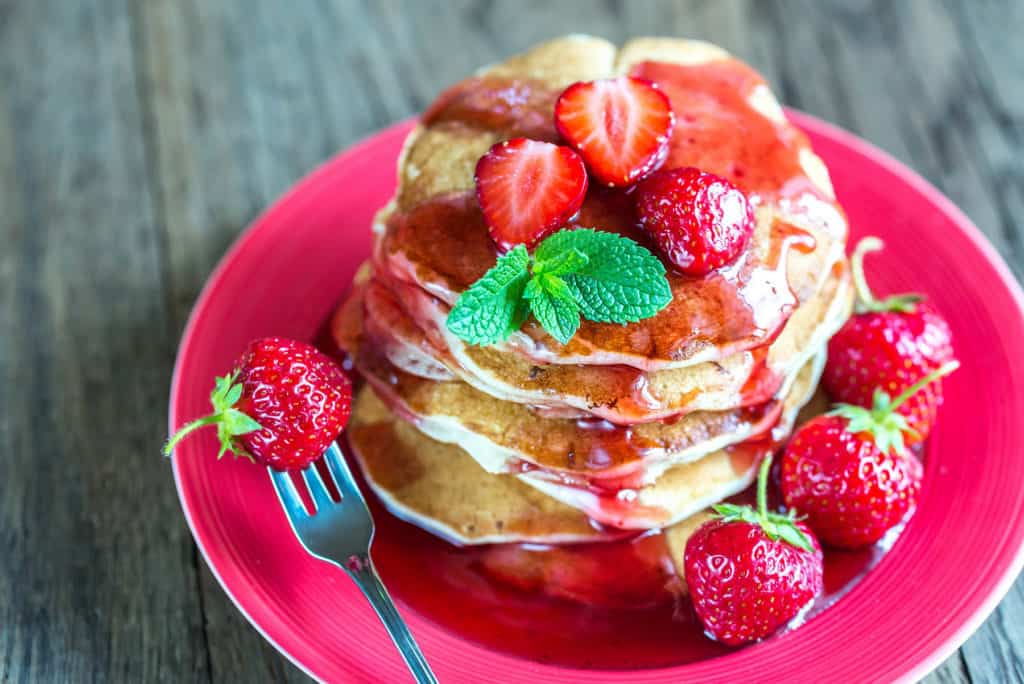 But this will explain to you why diabetics can’t have something like brown rice pasta even though there isn’t any sugar present.
But this will explain to you why diabetics can’t have something like brown rice pasta even though there isn’t any sugar present.If you pick up a box of pasta or something with a decent carb load, take a look at the Total Carbohydrate section. Underneath, you’ll then see dietary fiber and sugar content.
It could look something like this (pulling this directly from a box of gluten free pancake mix):
Total carbohydrates: 41g
Dietary Fiber: 1g
Sugars: 3gIf you looked at this purely from a sugar content perspective, you’d say that each serving has ¾ tsp of sugar in it. And that it wasn’t too bad!
However, this product has a lot of starchy carbs in it.
To find out how much in it in, you’ll subtract the grams of dietary fiber and sugars from total carbohydrates.
In this particular case, 41g – 1g – 3g = 37g.
So when you eat a single serving of this particular product, your digestive system will break down that remaining 37g of carbs into their smallest units before they are absorbed.
The smallest biochemical unit is glucose.
AKA. Sugar.
That’s why a product like this would be off limits to someone with blood sugar issues even though it technically has very little sugar included in it from an ingredients perspective.
Why Your Sugar Addiction Isn’t Your Fault
Do you see the problem now?
This is one of the reasons why people who go gluten free often end up with a ridiculous sugar addiction.
In fact, after working with clients for the past eight years on this, it’s pretty common to notice a significant uptick in sugar cravings after going gluten free.
 That 17 weeks of the constant influx of sugar (and potentially way too many carbs) skews your microbiome to favor bugs that aren’t so friendly to you.
That 17 weeks of the constant influx of sugar (and potentially way too many carbs) skews your microbiome to favor bugs that aren’t so friendly to you.And it rewires your brain and taste buds to expect it.
So much so that every meal isn’t complete without dessert.
And before you know it, your cravings have taken over to a point where you can’t control how much sugar you eat.
If you’re thinking… “gosh, I really don’t want to know all of this… ignorance is such bliss”… Trust me – you definitely want to know.
What’s not blissful are painful skin rashes that keep you awake all night long itching.
Or having diarrhea so much that you can’t go out without knowing exactly where all of the bathrooms are (and hoping that none are occupied when you need to make a mad dash).
Or even dealing with painful constipation that makes you feel like your body is bloated and sluggish. Or your already struggling thyroid that can’t keep up with the ups and downs of your blood sugar.
Or the brain fog, mood swings, the “I can’t keep my eyes open” fatigue all day long, and any other number of symptoms that you wish every day would just disappear.
I know you’re listening to this with every intention of becoming educated to make the best decisions for yourself… so here are a few more tips to help you over the holiday season.
More Tips To Keep Your Sweet Tooth In Check During The Holidays
Eat before you go to a party and bring a healthier dessert that you will eat.
 Put a cap on how much alcohol you’ll drink. I typically will stick with one glass of wine and then afterward, just stick with club soda or water with lemon or lime in it.
Put a cap on how much alcohol you’ll drink. I typically will stick with one glass of wine and then afterward, just stick with club soda or water with lemon or lime in it.Eat more protein! I often find that clients are skimping on the protein and rely too much on quick carbs to keep them going. During the holidays, get more protein in your diet even if it’s through protein shakes.
Choose healthier sweeteners to bake with. Yes, things may taste different, but you’ll get used to it. Swap out coconut palm sugar for cane sugar. Or try some of the alternatives like Swerve (erythritol-based making it a high FODMAP option), stevia, or monk fruit.
Stop saying that you’re being “bad” if you eat something with sugar. It’s ultimately your choice whether you choose to indulge or not. It’s not about being “bad” or “good”. I realize that we’ve had many years of conditioning with diet, but that “bad” vs “good” mentality is actually very unhelpful.
I’d argue that it actually creates more problems that lead to binging on sugar and dessert foods.
Self-punishment only leads to a vicious cycle of feeling awful and then seeking comfort — both of which drive you to eat more sugar.
If you’re ready for some help, check out this webinar I’m hosting:
Kiss Your Sugar Cravings Good-bye (And Ditch The Inflammation Driving Your Symptoms)
JOIN ME FOR THIS LIVE FREE TRAINING (I ONLY OFFER 1X PER YEAR)
Register nowI’ll be diving deep on the problems that sugar addiction creates and why the results can be so hard to break if you don’t know the three steps I’ve discovered over the years. I want to share them with you and hope to see you there!
And I’d love to hear in the comments what’s the most eye-opening snack or favorite food you’ve found that’s loaded with more sugar than you ever thought!
Pin this Post and Save it for Later

The post How Much Sugar Is Too Much? (Here’s How To Tell): GFS Podcast 101 appeared first on Jennifer Fugo, CNS.
4 December 2018, 5:25 am - 10 minutes 29 secondsAddicted To Sugar? It’s Not Your Fault (And Here’s Why): GFS Podcast 100
I know you have good intentions, but we need to talk…
You’re trying so hard to be healthy this holiday season… doing your best to make better choices and eat less junk even though you’re addicted to sugar.
With the hopes that after the holidays, you’ll simply start fresh.
But I know you have your doubts about whether you can actually follow through with that in January.
Last year probably didn’t go as planned (especially if you were one of the many who got sick). You didn’t get as far as you had hoped.
But this year’s gotta be better, right?
Well, that all depends on a number of factors that you may be blind to right now.
I’ve discovered in my clinical practice is that once you’re aware of what’s causing the problem, you can then take action.
You can make better choices. And ultimately that’s what this conversation is all about.
Over the next two episodes, we’ll explore how the “Season Of Sugar” as I call it has become twisted to glorify sugar and desserts at nearly every single turn.
Addicted To Sugar? Blame The 17-Week Sugar Binge
I’d argue that in the US, we don’t get a break from desserts even after Labor Day which tends to be around the beginning of September.
What used to be a significantly shorter 5-week holiday season loaded with treats has bloated to an astronomical 17-week period of sugar overload!
 That’s right… 17 weeks of sweets where stores stock their shelves with Halloween candy nearly 2 months before that big day.
That’s right… 17 weeks of sweets where stores stock their shelves with Halloween candy nearly 2 months before that big day.Take a moment and really think about that… 17 weeks of palette-shifting, tastebud-twisting, Dopamine-overloading, skin-triggering and gut-wrecking.
That’s a long time.
Basic training that gets you in fighting shape to serve in the military only lasts 9 weeks.
They know that in 9 weeks, they can mold you into a soldier ready to start more advanced training.
And yet, somehow after 17 weeks of conditioning, you’re just supposed to drop sugar like it’s a hot potato?
Yeah right.
I want to be clear… I’m not here to shame you or make you feel like a failure.
Those feelings of inadequacy are a distraction from the bigger conversation about why you’re even in this boat in the first place.
And what caused to ultimately become addicted to sugar.
If you want to make better choices, you’ve got to know HOW you’re being played, right?
This conversation also isn’t about judging your mindful indulgences like a piece of chocolate or a teaspoon of honey in your morning tea.
My main concern today is with the excessive overindulgences that hijack your brain, gut, and taste buds to expect something so unnaturally sweet.
ALL. THE. TIME.
And then you’re faced with the utterly unrealistic reality that you are supposed to drop sugar cold turkey without any issue come January 1.
After 17+ weeks of conditioning.
Sure…
It should be easy peasy… right?
Yeah… NO.
10 Ways Your Self Control Is Bamboozled By Sugar
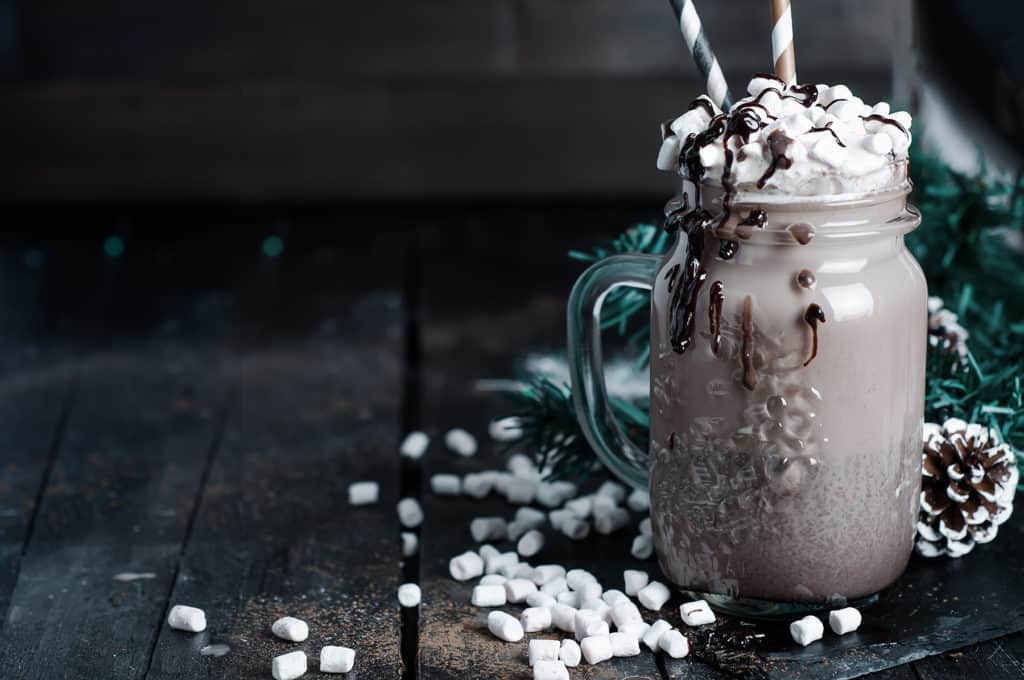 Here’s how your taste-buds and biology are tricked by the food industry and holiday consumerism to fuel your addiction to sugar…
Here’s how your taste-buds and biology are tricked by the food industry and holiday consumerism to fuel your addiction to sugar…1. As I already mentioned, your palate is inundated with sugar starting around the end of August (long before Halloween)!
2. It’s pretty normal to crave more carb-heavy and sweet foods in the cooler months of Autumn and Winter.
3. Politics has gotten incredibly divisive and polarizing which frankly can trigger a ton of stress. The most common way to deal with stress is… sugar!
4. Stress… going to parties, seeing family, dealing with shopping, feeling overscheduled, and end of year stuff.
5. Many Thanksgiving dishes have added sugar to them… even the vegetable like carrots, sweet potatoes, and brussels sprouts.
6. Gluten free food products tend to have even more added sugar to them to make up on flavor. This also can be a hidden reason why you’re now addicted to sugar.
7. And let’s be honest… No one has just ONE gluten free cookie.
8. Sugar is in pretty much every hot drink from here until springtime — hot apple cider, hot chocolate, honey or sugar (or syrup) in your teas and coffee.
9. People bring in cookies and treats to the office to pawn them off on you (and the co-workers) so they don’t have to eat them all at home.
10. Food companies know that YOU don’t know how to read their food labels. They use healthy ingredients like dried fruit to make you think that it must be healthy when it’s actually not.
Hidden Sugar In Healthy Food Like Dried Fruit
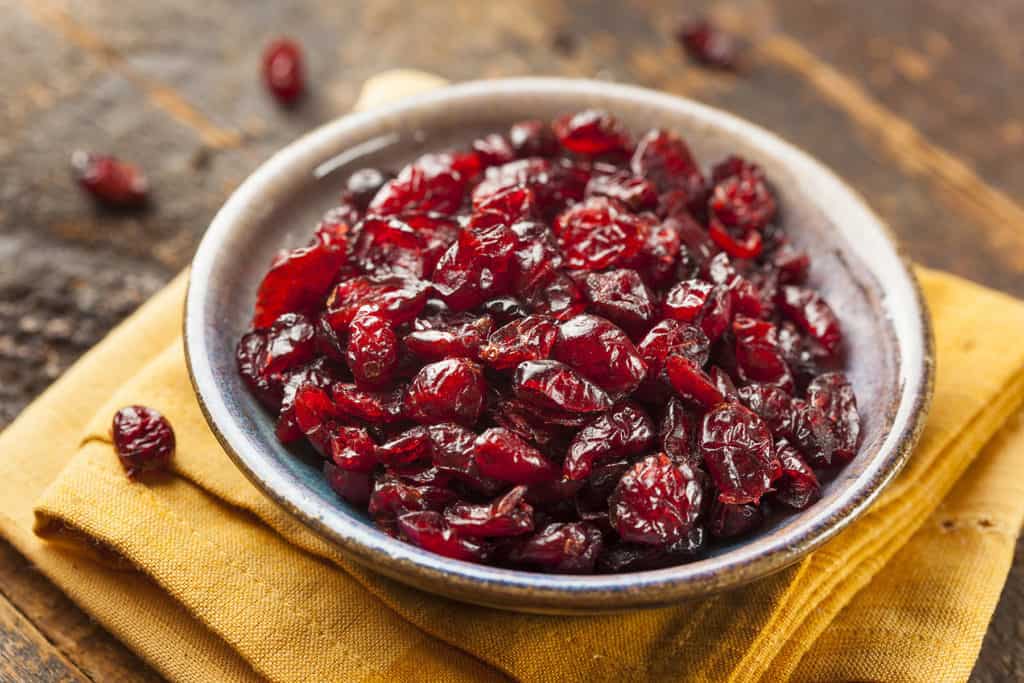 One of the biggest offenders is dried fruit!
One of the biggest offenders is dried fruit!Oh yes… you read that correctly.
While dried fruit’s higher sugar content can come from its natural sugars, that doesn’t excuse eating it in large quantities.
It’s easier to eat a bag of dried apricots.
But no one would likely eat that many fresh apricots in one sitting!
And to make matters worse, it’s not uncommon for food companies to add even more sugar!
That’s the case with dried cranberries (for the record, they are very tart, but not naturally sweet).
If you’re an “I need to see the numbers” type of person, I’ve got you covered! (They are truth-be-told quite sobering.)
That’s why I created a great cheat sheet to help you see exactly how much sugar naturally occurs and is typically added to all your favorite dried fruit.
>>> GET MY Sugar Content In Dried Fruit Cheat Sheet HERE
In the next episode, I’m going to share with you my favorite simple strategies to outsmart sugar this holiday season. This way you can start to break free from feeling addicted to sugar and out of control of your cravings.
What’s really neat is that while these tips are perfect for reigning in your sweet tooth now, they also still apply all year round!
In the meantime, I’d love if you dropped a comment on this episode’s podcast sharing what YOUR biggest sugar downfall is during the holidays?
We all have at least one.
(Mine is pretty much anything with cherries or peanut butter.)
Pin This Post And Save It For Later

The post Addicted To Sugar? It’s Not Your Fault (And Here’s Why): GFS Podcast 100 appeared first on Jennifer Fugo, CNS.
27 November 2018, 5:25 am - 18 minutes 40 secondsHow Post Birth Control Syndrome Affects Liver Detoxification Years Later with Dr. Jolene Brighten: GFS Podcast 099
One common thread for clients with hormone issues is post birth control syndrome that can rear it’s ugly head years later.
Wait… did you just say post birth control syndrome?
What the heck is that?!?!
It’s a very real issue that results from being currently on or having taken birth control pills (BCPs) — even if it was 10, 15 or 20 years ago!
What most people don’t know is that hormones (like estrogen) are detoxified by your liver to be removed from active circulation.
They also don’t realize that BCPs essentially shut down communication between your brain and your ovaries.
Because your body is ONE system, that single statement alone should grab your attention.
No doctor ever told me for the ten years that I took BCPs that I was effectively shutting down that very powerful and necessary hormonal feedback loop!
Since hormones aren’t my area of expertise, I reached out to my close friend — Dr. Jolene Brighten.
She knows her stuff and can go toe-to-toe (because she’s a total research geek) on all things hormones.
Before we head into the podcast, make sure to subscribe to my podcast on iTunes!!!
And if you love everything you hear, I’d seriously love if you headed over there to leave a review on iTunes so that new listeners see just how valuable this conversation is!
How Post Birth Control Syndrome Affects Liver Detoxification Years Later with Dr. Jolene Brighten
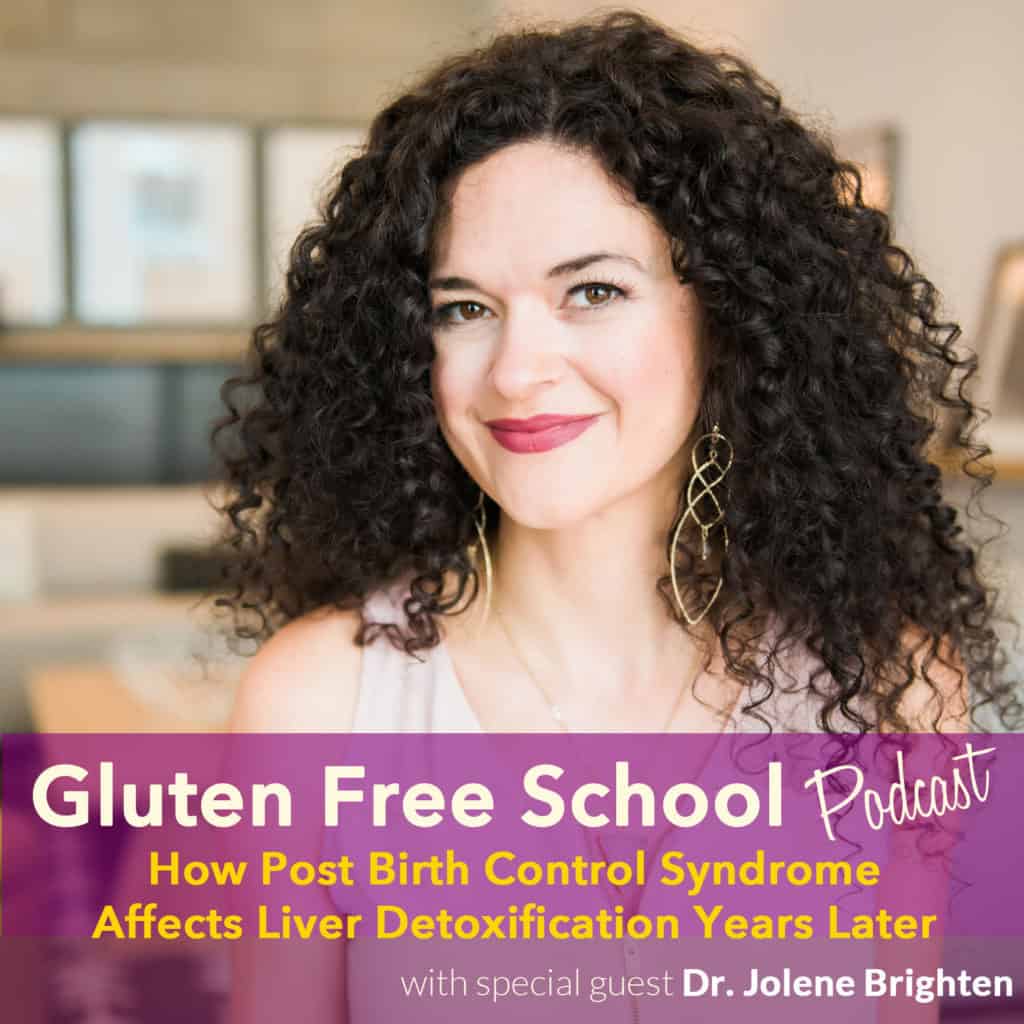
SHOW NOTES:
Dr. Jolene’s Post-Birth Control Awareness Week (REGISTER NOW)
Beyond The Pill BOOK (coming in January 2019)
TRANSCRIPT
Jennifer: I have a very special episode for you today.
I know you are used to me talking all by myself, but I felt incredibly compelled today to have a guest join me.
In breaking the tradition of season four, I would love the opportunity to welcome Dr. Jolene Brighten. This is her first time ever to the Gluten Free School Podcast.
She is a functional medicine naturopathic medical doctor and the founder of Rubus Health, a women’s medical clinic that specializes in women’s hormones.
She is the number one expert in a condition called Post Birth Control Syndrome.
She also talks a lot about the long-term side effects associated with hormonal contraceptives.
Now here’s the thing — If you’re a man and you’re listening to this and you’re like, “What, post birth control syndrome? I’m out.”
You know what? You probably know a woman in your life who is experiencing this, and this could be really good information for her, and just also in general. There’s a lot of stuff going on with birth control that we need to be aware of, and the consequences down the road even when it’s long been in your rearview mirror.
But today I want to talk about how that directly affects estrogen metabolism. So Dr. Jolene, thank you so much for joining us!
Dr. Jolene: Hey there. Thanks so much for having me!
Jennifer: I don’t consider myself a hormone expert. I know that because you’re dealing with all of these issues, and birth control is essentially a way of shutting off the connection between your brain and your ovaries, correct?
Dr. Jolene: Totally. That’s the number one mechanism of action is to flood the system with so many hormones that your brain says, “Hey ovaries, we’re all good, so let’s not signal to them.”
So your brain and your ovaries stop talking. This means that there is no ovulation, which seems like a perfect solution if you don’t want to get pregnant. That’s until you find out that there’s a whole lot more to this story.
Lesser Known Liver Side Effects From Post Birth Control Syndrome
Jennifer: We know that birth control may be a factor for a lot of women. I have a lot of clients who they’ve either taken it in the past. Or they are still taking it now because they don’t want to get pregnant, but they’re in that committed relationship. So for anybody listening to this who’s like, “Are we talking about things that not might be cool for me?”
 A lot of the women I work with are married, they’re in committed relationships, but they were told that having children now might not be a good idea because of having previous traumatic births in the past and other reasons.
A lot of the women I work with are married, they’re in committed relationships, but they were told that having children now might not be a good idea because of having previous traumatic births in the past and other reasons.But here’s the thing — How we metabolize estrogen is really important. Birth control pills especially mess with that, so can you talk to us a little bit about the role that estrogen plays and how the pill can really screw that up?
Dr. Jolene: I do want to say that if you’re a woman who’s using hormonal birth control, it’s not my aim to shame you or freak you out. But I think that you deserve all the information so you can care for your body.
It’s very much my philosophy that it’s not my body, it’s your body.
Whatever you choose, it’s my job as a physician to support that. And so here’s the really important thing to understand, and I thank you for starting this conversation, Jen. You said, “I want to talk about the liver” and here we are!
We did not diagnose liver tumors in women to the extent that we do now, not until the hormonal birth control was introduced did we start seeing lots of lumps on your liver, so benign liver tumors are actually very common. That’s a structural change happening to the liver because of being on hormonal contraceptives.
Now, your liver does so many wonderful things, and one of those things is detoxification, so your natural estrogen has to go through liver detoxification. Phase one and phase two detoxification, and there’s methylation required for all of that as well.
And so when you’re on hormonal birth control, any oral estrogen also has to pass through the same detox mechanisms. The problem is not their structural alterations — yes, these liver tumors are benign. We do see an increase in liver cancer, but, for the most part, the liver tumors are benign.
But, keep in mind, a structural change means this tissue is no longer working the way that it once was, so now we’ve inhibited detox capacity in that way.
In addition to that, these liver tumors rupture very easily.
Your liver is pumping so much blood that while a doctor may say it’s benign as in you don’t have cancer, it’s certainly not benign if you’re walking around taking the pill, you don’t know you have a liver tumor, you end up in a motor vehicle accident, or maybe you’re playing football.
But you have some kind of trauma to the abdomen, they can rupture and lead to a bleed.
Nutritional Concerns Resulting Even Though You Stopped The Pill
So that’s one way that the birth control can impact your liver, but in addition to that, you have to take enough estrogen to shut down the brain from talking to the ovaries. When you do that, you’re going to overwhelm the system with estrogen.
As you do that, the liver is going to struggle in other ways to be able to detoxify environmental toxins. So think about it. You’re walking around an environment that you don’t have full control over.
You already have xenoestrogens hitting you left and right. These are chemical compounds that are in our environment. They’re toxins that alter your hormonal function as it is, but also make extra work for your liver. These come in personal care products and receipts, and just about everywhere.
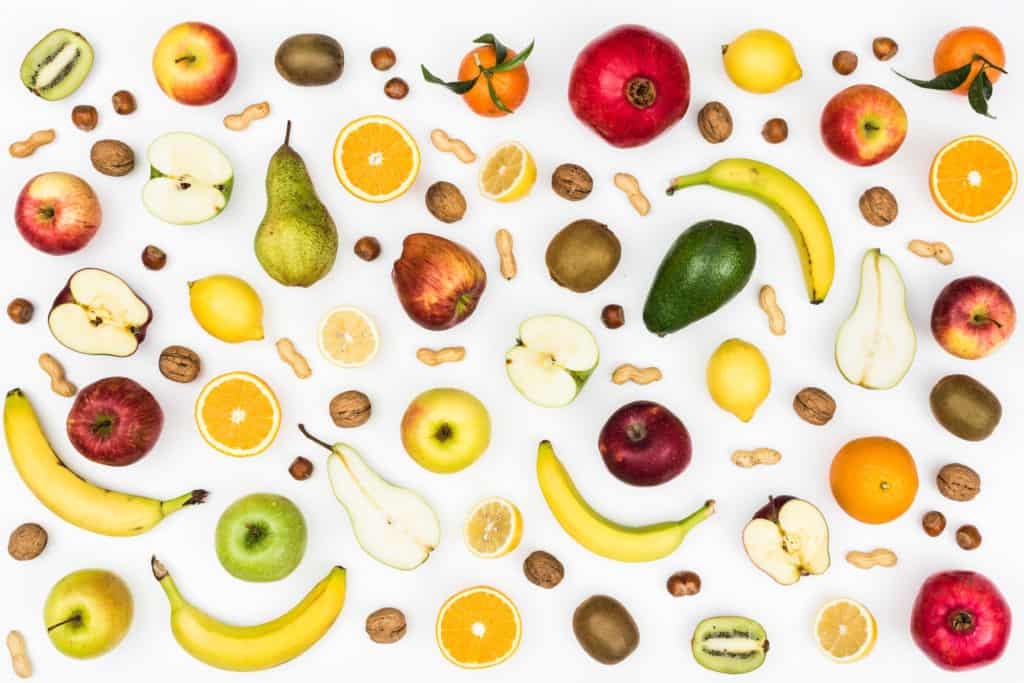 In addition to that, hormonal birth control is depleting nutrients.
In addition to that, hormonal birth control is depleting nutrients.The very nutrients you need to run your phase one and phase two liver detox, as well as run the COMT pathway which is a gene that helps with estrogen methylation.
Specifically, if you’re lacking magnesium, which just about everybody’s diet is lacking magnesium, hormonal birth control depletes magnesium, you can be in big trouble when it comes to that liver detoxification. I know that is a lot of information there, but does that make sense?
Jennifer: It does. And fortunately, I have recently shared in a podcast, I believe it’s one or two before this, so if you guys are listening sequentially, you have already heard all about the liver detoxification pathways — phase one and phase two — so you are familiar with what we are talking about. I’m really glad this is able to overlap.
I’m a little taken back, to be honest with you. I was on birth control pills for 10 years. I never knew that you could have these structural changes within your liver. That’s actually really alarming, and so anybody who’s listening to this, that’s, I guess that’s something really pretty serious you have to consider.
So if you go off the birth control, do they go away?
Dr. Jolene: I did the pill for 10 years too, by the way, that’s why I’m like, “Let’s not be shaming anybody.” But the thing about the liver is those hepatocytes, so the liver cells, they are amazing. They can regenerate themselves. It depends on underlying conditions, individualized factors like are you still having exposure to other elements, but yes, some of these tumors can go away.
The body over time can break them down and can heal. Things like milk thistle can certainly help. That’s an herb that helps the hepatocytes regenerate. We see that milk thistle can help in conditions like cirrhosis, which is due to alcoholism, so it is something that is very startling.
Why We Need More Research On How Birth Control Pills Affect Women
The research for women after stopping birth control pills isn’t the greatest. Researchers are not really looking at it like, “Oh, how long do these tumors take to resolve?” They’re more just documenting what happened.
We also have to understand that research is done through the lens of a healthy woman… not those who are sick.
Hormonal birth control was never designed for a diseased state to begin with. It was the first pharmaceutical introduced that you didn’t have to have a diagnosis. It was just you just had to be fertile.
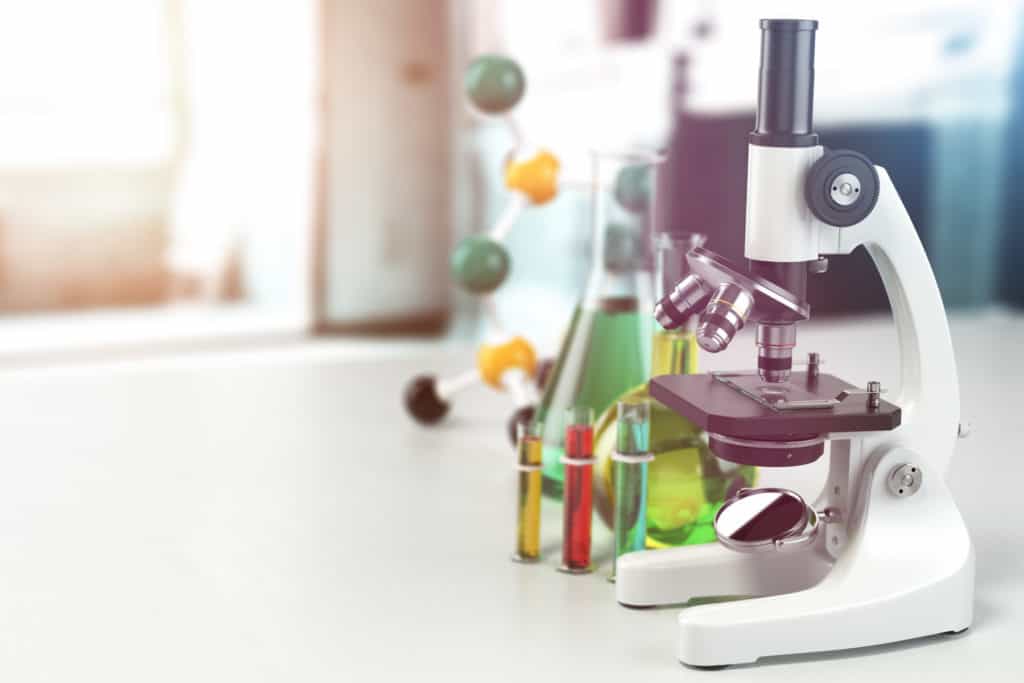 With that, it was really designed for a healthy, fertile female, however we know that not everybody is made exactly the same.
With that, it was really designed for a healthy, fertile female, however we know that not everybody is made exactly the same.Our genetics vary. We live in different environments.
And so that’s the other thing we have to respect and understand with regards to the literature, is that research studies will come out and they’ll say things like, “Oh this is a minimal risk,” or “Oh, it’s a low risk,” but is it true for you?
For example, the breast cancer risk association… they’re like, “Oh, it’s just a mild increase.” Yeah maybe, unless you’re somebody who has some genetic variations, you live in a very toxic environment, you have issues with your detox capacity.
There are other confounding variables that we really have to stand back and look at the individual.
The way it’s dispensed these days, you’re more likely someone will pass you the birth control pill over candy. Sugar is more of a villain than the birth control pill. I’m not saying that birth control pills or birth control is a villain, but it is a medication.
We have somehow lost sight that this is a medical intervention that’s designed to shut down your entire reproductive system. And P.S. — what affects your reproductive system affects everything in your body.
I just have to giggle that in medicine… the way that we teach medicine and learn medicine is a way that we can digest it as humans. But it’s like you have your rheumatologists, your endocrinologists, your gastroenterologists, and everybody’s separate and every system is separate.
But you know who doesn’t care? Your body. Your body does not care.
Your body doesn’t care whether the gastroenterologist thinks your gut is separate from your ovary. And it doesn’t get why the GI doc wants to send you over to the endocrinologist for your thyroid.
Your body knows, “I need these hormones in order to function optimally, and I need my gut. I need my liver. I need my skin. I need all of these things working in harmony if I’m going to be optimal.”
How Long Can Symptoms From Post Birth Control Syndrome Last?
 Jennifer: If a woman, say, was on birth control 10 years ago, got off of it, is it possible that even now the effects could be lasting? Like you may still feel the repercussions of having been on birth control 10, 15 years ago?
Jennifer: If a woman, say, was on birth control 10 years ago, got off of it, is it possible that even now the effects could be lasting? Like you may still feel the repercussions of having been on birth control 10, 15 years ago?Dr. Jolene: Oh absolutely. This is the thing that I have seen some people saying, like, “Post birth control syndrome only lasts about 6-12 months.”
And I’m like, “Well clinically, what I have seen and documented is that the side effects on hormonal birth control or a result of coming off, if you don’t do something about them. They don’t just go away.”
So since we’re keeping this conversation very liver focused because your people are in the know, there’s another change that happens within the genetics of your liver.
When you take hormonal birth control, it changes the genetic expression of a protein called sex hormone binding globulin. This is why you lose your libido on birth control, and it doesn’t come back when you stop.
That is something that research has looked at and said even five years after stopping hormonal birth control, the genetic alterations persist and that woman has higher levels of sex hormone binding globulin than a woman who has never used hormonal birth control.
This is really important to understand. It alters the genetics in your liver. This much we know. The question remains — what other genetics are birth control pills altering?
Because we don’t know as much as we would think we do in medicine. Clinically, I found this to be true.
I’ve had women who were on the pill for 10 years. And even for like 30, 40 years, which is crazy because it’s not how they were designed to be used.
If you think about shutting down your reproductive tract for 30-40 years, that’s gonna have some impacts.
But I’ve seen these women come in and I’ve had women off of hormones for five years, 10 years, 15 years, and their sex hormone binding globulin, sure enough, is elevated.
 But with the things that I’m sharing with you, my Birth Control Quick Start Guide, and with the things that I’ve outlined in my protocols and my book Beyond The Pill, I am the Sherpa.
But with the things that I’m sharing with you, my Birth Control Quick Start Guide, and with the things that I’ve outlined in my protocols and my book Beyond The Pill, I am the Sherpa.These women have done the work in bringing down their sex hormone binding globulin and bringing their libido back. It speaks volumes to epigenetics and what you can do with the right supplements, the right food, and the right lifestyle factors.
I want to see so much more research on women’s medicine altogether, but this is something that I wonder in these studies, were these women eating a standard American diet? What was going on for them that that sex hormone binding globulin persisted?
I have seen women who are “eating a clean diet and they’re doing everything right” and they’re still having these issues years later after being off of hormonal birth control.
A lot of that comes down to that’s where you need the medical Sherpa because we don’t fix people. I think it’s so disempowering to act like, “Oh I’m a doctor. I fix people.”
The reality is that I solve people’s puzzles. I outline the path and I basically am like, I mean I’m old enough to remember maps, like legit maps that you drew on and been like “This is how we’re gonna get from point A to point B.”
That’s my job — to show YOU that.
But it’s really our patients and our clients who do the work, who take the step every day.
The most powerful thing you can do is choose wisely with what you put at the end of your fork, and your doctor is not there doing that with you, so that’s just my little soapbox moment, to be like, “Women heal themselves, okay?”
Diving Deeper Into Post Birth Control Syndrome
Jennifer: I agree with you wholeheartedly. Okay, so first everybody, you can check out Dr. Jolene’s amazing guide on her website.
Number two, her book coming out called Beyond The Pill is amazing. It’s a really worthwhile read and I would encourage all of you to go grab a copy. It is available to purchase right now. It’s not out yet. It will be out in January 2019. I am so excited for this book.
Then she also has an amazing event coming up that … Tell us a little bit about it because it’s a BIG deal (and YES, I’m a part of it which is such a deep honor)!
Dr. Jolene: Yeah, so we are launching the first ever Post-Birth Control Syndrome Awareness Week.
We are aiming to raise awareness around hormonal contraceptives and the impacts that they have on women’s bodies, and help them stay safe and understand how they can safeguard against some of these negative side effects.
For every woman who has come into my medical practice and said, “My doctor laughed at me. My doctor said I was in my head. My doctor told me just to go back on birth control, that I was broken, that I would never fix my period, I would never be able to fix my mood or any of this without hormonal birth control.”
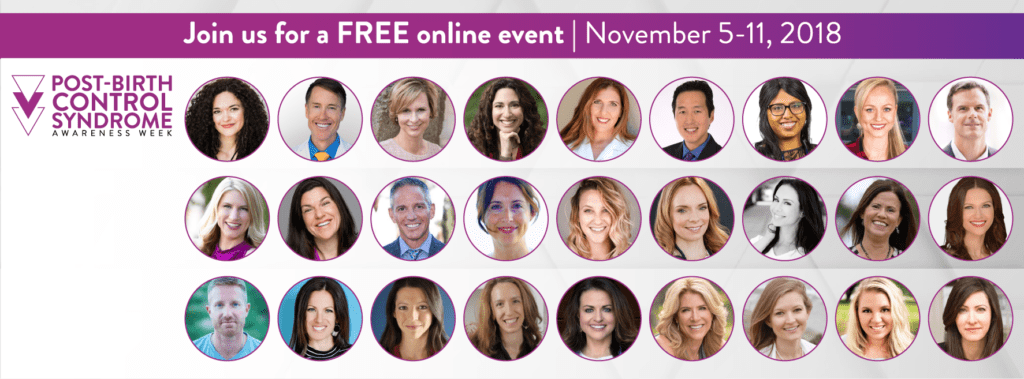 I really want to raise awareness that this condition is real. It is not in your head, and there’s a whole lot that you can do about it.
I really want to raise awareness that this condition is real. It is not in your head, and there’s a whole lot that you can do about it.We’re bringing in a myriad of experts which are really the trailblazers and the thought leaders together because of this Awareness Week.
You’re actually gonna get access to information that’s not even in medical textbooks yet! And it’s also for the clinicians who are on the ground, doing the work, reading the research, and working with people one on one, bringing the most practical and tangible information.
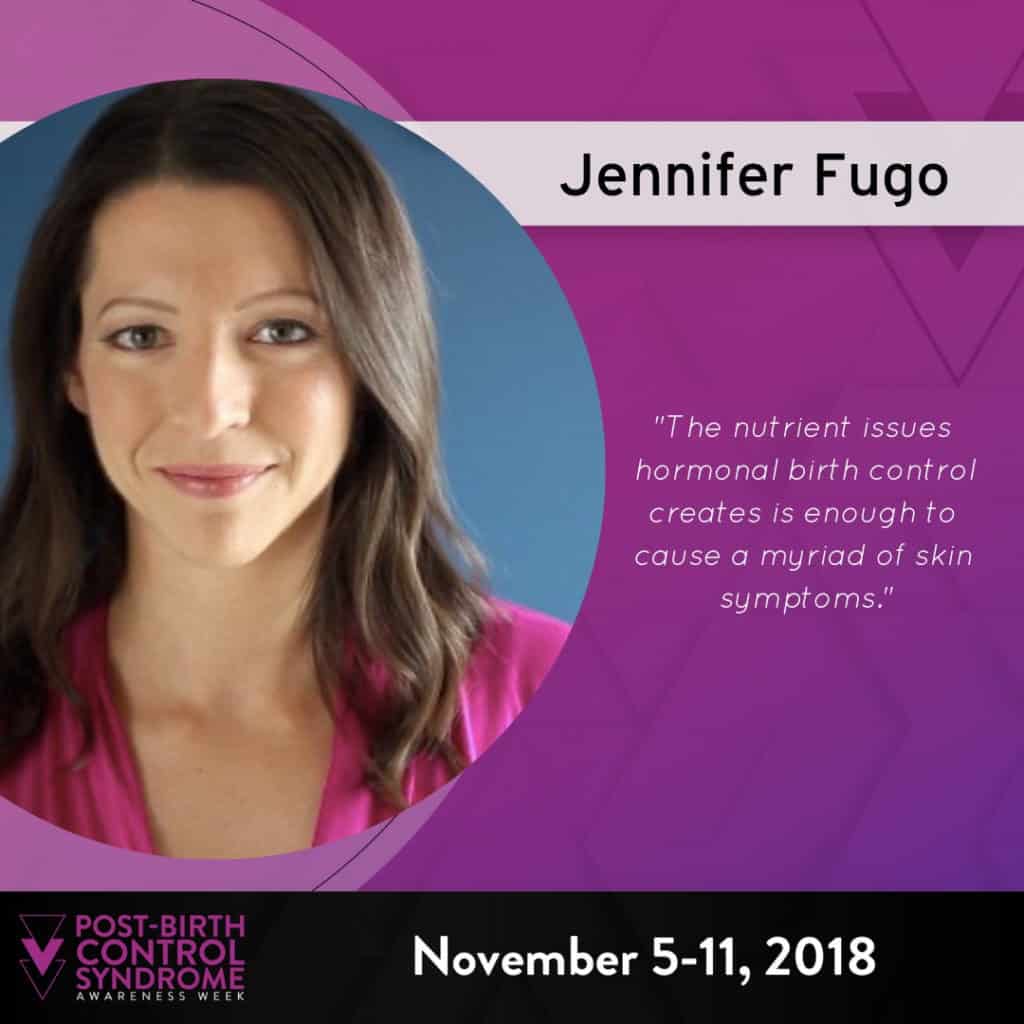 We don’t wanna just bombard everybody with, “Here’s a whole lot of problems,” but we also want to offer those solutions.
We don’t wanna just bombard everybody with, “Here’s a whole lot of problems,” but we also want to offer those solutions.It is now at this time 2018, and I feel like everybody’s just starting to catch on to what women have been complaining about forever which is medical gender bias.
We know that it’s us ladies who are dismissed at a higher rate.
We are told that symptoms are in our head and we’re given very few options in medicine in terms of what do you get, hormonal birth control, IVF, hysterectomies, and all those things have a time and a place, but it’s time that we transform women’s medicine for the better.
The way that I see that we’re going to do that is by taking the medicine and putting it in the patient’s hand so that they can go to their provider and they can ask for better and they can make that partnership with their provider. I think we’re gonna make some big changes in women’s medicine.
Jennifer: HERE is the link to sign up for this event! It’s completely free to attend.
It is going to be an incredible opportunity for you to really dive into this whole area and get information. I just want to thank you so much for your time in joining us on the podcast. You’re my first guest ever for season four and I’m really glad to have you here.
Dr. Jolene: I’m so honored. You broke your streak and brought me in…
Jennifer: I know. I had to! You’re too brilliant of a guest! I just had to do it.
Dr. Jolene: Well thank you, I appreciate that. No one can see me blushing except you right now.
Jennifer: All right, well thank you for tuning in. I will put all those links in the show notes, and I will see you the next time.
The post How Post Birth Control Syndrome Affects Liver Detoxification Years Later with Dr. Jolene Brighten: GFS Podcast 099 appeared first on Jennifer Fugo, CNS.
23 October 2018, 4:25 am - 12 minutes 10 secondsDemystifying Liver Detox (And What To Do Instead): GFS Podcast 098
In my opinion, the term “detoxing” is thrown around way too much. (Especially liver detox!)
It seems like every other product released into the marketplace is detoxing something.
Your skin…
Your gut…
Your liver…
Your blood…
Your lymphatic system…
 The list goes on and on.
The list goes on and on.But one thing has become quite clear to me → the general public has no idea what it really means to detoxify anything. Nor are most people aware of their body’s innate capability to detoxify on its own.
Two questions come to my mind!
Why are we so obsessed with pushing the detoxification process harder?
And is forcing detoxification faster even a good thing?
Let’s take a deeper look!
Detoxing — Why It Might Be Overkill
I think we can all agree that the world we live in is filled with too many harsh chemicals to count. And you’re constantly bombarded by fuels, off-gassing, hidden toxins, xenohormones, byproducts, heavy metals, all sorts of drugs, and the list goes on.
I understand your concern… I truly do.
And I know what it’s like to have a personal mandate about reclaiming your sense of wellness.
 But in the hurry to jump on the next detox bandwagon, you should ask yourself → is it appropriate for me to push my body harder right now?
But in the hurry to jump on the next detox bandwagon, you should ask yourself → is it appropriate for me to push my body harder right now?For most people listening, the answer is likely a resounding NO.
The process of detoxifying your body can add even more stress that may leave you feeling worse off than before.
What most of us don’t need is MORE stress heaped on top of everything else that’s going on.
There are other paths back to wellness that don’t involve the need to detoxify anything. I say this because I’ve seen the effects of how doing detoxes can totally backfire.
Recently I’ve had a number of chronic skin rash clients confide that they did some candida detox available online and ended up getting much worse.
Naturally, they felt embarrassed and upset that in making the choice to detox, they caused more harm than good (and are now living with the consequences).
So that’s why I personally believe that it is often wiser (and kinder) to support your natural detoxification pathways rather than push them harder.
Understanding Your Liver Detox Pathways
If you’ve been sick (or even just moderately unwell) for some time, detoxing is probably not the next best step.
First of all, it fails to truly pinpoint what is actually going wrong. Thus it is not a root cause approach. (While this totally is.)
Second, I’d argue that forcing your body to detox isn’t taking care of your best self. Nor is it some act of self-love (no matter what all the Instagram gurus say).
Third, it fails to acknowledge the science and biology of your liver’s detox system.
So let’s take a moment and break your natural liver detoxification system down. That way, you can make better choices moving forward.
 Before we go any further, here are some things that liver detox is responsible for…
Before we go any further, here are some things that liver detox is responsible for…- It helps activate and deactivate certain hormones (ie. Vitamin D, estrogen).
- It makes toxic chemicals less toxic and easier to remove through urine.
- It metabolizes drugs that you’re exposed to and can determine how long those drugs last in your system.
So you can see from this short and incomplete list that your liver does more than you probably realize.
And not everything your liver deals with is toxic.
In order for your liver to move substances through its natural detox system, your body must have certain ingredients on hand (like glycine) to keep the process going. Without a supply of those ingredients, your liver’s actual detoxification capacity drops.
That creates a situation where your liver becomes overwhelmed and you begin to feel not so hot.
How Your Liver Detox Pathways Work
I think now is a good time to explain how the liver detox pathways work.
You’ll see exactly how your liver can become overwhelmed when detoxification is pushed too hard. And why I believe that supporting your liver should be your first priority.
I recently shared the role that your mitochondria play in producing energy and that they need an ample supply of certain nutrients or else they can’t function optimally. (Read more about it here.)
The same is true for your liver.
These detoxification pathways require specific non-negotiable “ingredients” in order to handle whatever is going on. Should you be exposed to more of something (like a pesticide, drug, or toxin), your liver’s need for said ingredients will increase in order to detoxify properly.
 Your liver detox system is broken into two phases →
Your liver detox system is broken into two phases →- Phase 1 (also known as the P450 Cytochrome Detoxification)
- Phase 2 (which includes multiple pathways)
Phase 1 happens before Phase 2, but not all things headed for your liver require Phase 1 detox.
Some can head straight through to Phase 2 as they are.
The purpose of Phase 1 is to prepare chemicals for Phase 2 detoxification, but often the products of Phase 1 are more toxic than they were beforehand. And this is an important point that I’ll explain more of in a moment.
Lastly, Phase 1 detox can be increased (or upregulated) by certain exposures like caffeine, alcohol, hormones, high protein diets, high intake of cruciferous veggies, and acetaminophen (or Tylenol).
Increasing Phase 1 means you increase the amount of products that are spit out on the other side waiting to go through Phase 2.
Phase 2 detoxification has different pathways that require ingredients like glycine (an amino acid), glutathione, and other biochemical ingredients that you’ve probably not heard of.
I don’t want to get too nerdy here… so the point is that for Phase 2 to detox properly, your liver MUST have the necessary ingredients available to get the job done.
Learning About Liver Detox From “I Love Lucy”
To make this incredibly simple for you to understand, I want you to think back to the episode of “I Love Lucy” where Lucy and Ethel go to work in the chocolate factory.
Their funny skit is something very similar to Phase 1 and Phase 2 liver detox!
Phase 1 would be when the chocolates are being made.
Meanwhile, Phase 2 is illustrated by the failed attempt on Lucy and Ethel’s part to wrap all of the chocolates coming down the conveyor belt.
Initially, the ladies are able to keep up with the flow. But when the chocolate line speeds up, we witness a huge back up of chocolates filling their mouths and blouses!
The point is when Phase 1 detox is pushed too hard OR if Phase 2 doesn’t have enough ingredients to move things through, a backup of toxic material will occur.
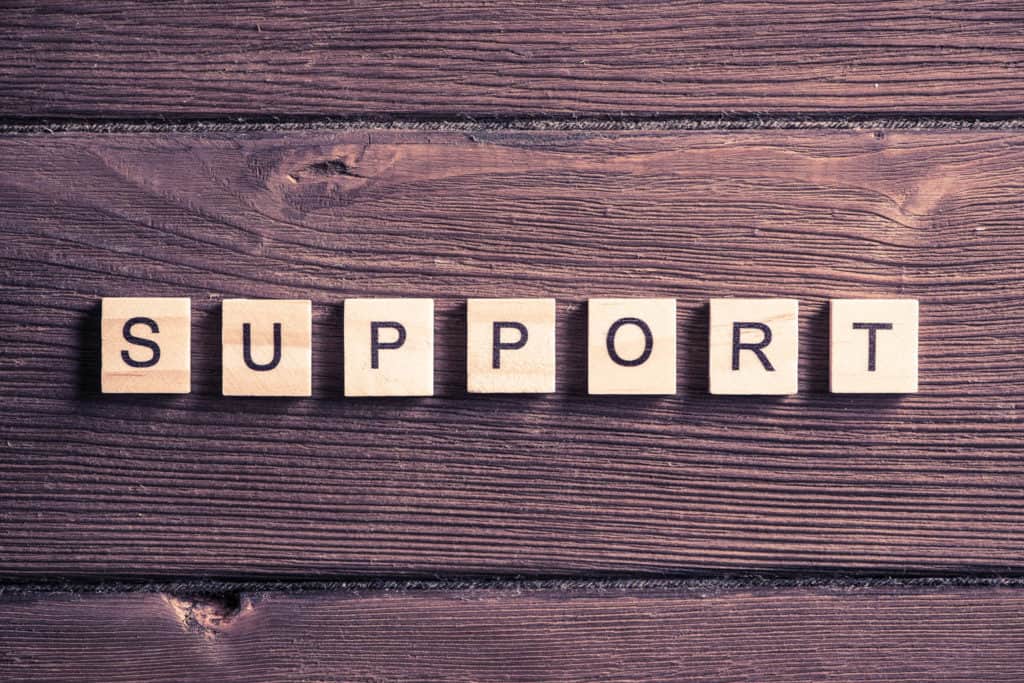 And that’s why it’s important to properly support your liver rather than fixate on detoxifying it (especially if you’re not working with a practitioner). It also underscores the deep connection that your liver has to other systems in your body.
And that’s why it’s important to properly support your liver rather than fixate on detoxifying it (especially if you’re not working with a practitioner). It also underscores the deep connection that your liver has to other systems in your body.No matter what type of protocol I create, I always have to consider if the client’s liver needs support.
This explains why people often have heightened reactions and feel lousy doing detoxes and cleanses! Some call it a Herxheimer reaction or even a “die off” reaction.
The bottom line is that if you feel awful, your liver isn’t properly supported to handle the added toxic burden.
And yes, this certainly can happen when you attempt one of those DIY candida cleanses.
The amplified symptoms you experience aren’t necessarily something to muscle through. Often it’s your liver’s way of saying (or maybe screaming) that it needs more support and possibly a slower pace.
If you’ve got any questions, please leave them below as I’m happy to answer them!
The post Demystifying Liver Detox (And What To Do Instead): GFS Podcast 098 appeared first on Jennifer Fugo, CNS.
21 August 2018, 4:25 am - 11 minutesWhat If It Isn’t Adrenal Fatigue? (The Hidden Reason Why You’re Still Tired): GFS Podcast 097
Apparently everyone who’s chronically tired has adrenal fatigue. It’s pretty easy to self-diagnose it thanks to the nearly three million search results for the term on Google.
While I certainly believe in adrenal fatigue (and even had it myself back in 2009), most of my clients who swear they have this issue end up with something else.
It typically comes as a big surprise because everything they’ve read has convinced them that their exhaustion is due to pooped adrenals.
But what I’m going to say will fly in the face of adrenal fatigue.
The reason is that a chronic energy deficit can be due to dysfunction that goes deeper than your adrenals. Because your adrenals don’t produce energy… I like to think about their job more as managing the energy that you have.
So if you’re literally not making enough energy at a very basic biochemical level, it’s no wonder why you’re so tired.
What Actually Makes Energy In Your Body?
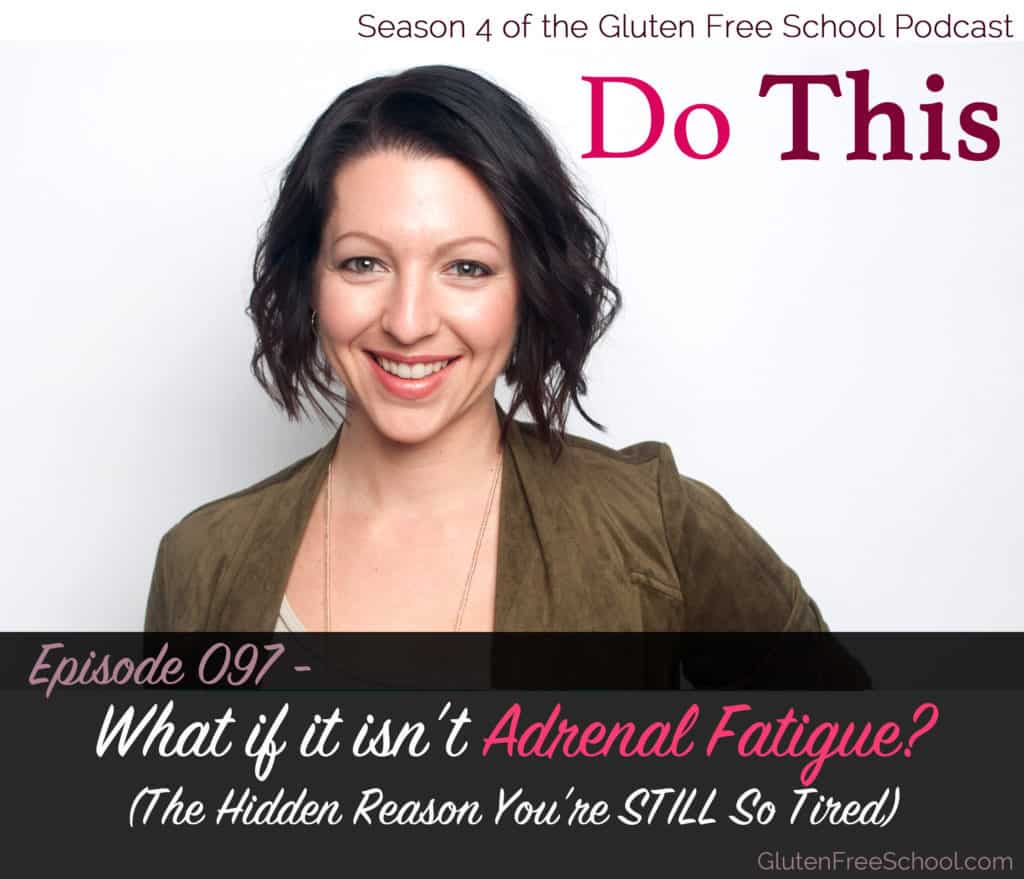
Okay… so then you’re probably wondering → what makes energy in your body (or, to be more specific, within your cells)?
Mitochondria.
I know… it’s a funny word. Maybe you remember it from high school biology.
Well, I like to think of mitochondria as a power plant that generates the energy currency of your body known as ATP.
ATP is short for Adenosine TriPhosphate.
Generally speaking, your mitochondria ideally “burn” fat (lipids) and carbs to make ATP (though on occasion they can be supported with a few amino acids).
These little power plants exist in many of the cells of your body, but are heavily concentrated in muscle tissue (especially your heart), liver, and brain (because they require so much energy to function properly).
If your mitochondrion can’t keep up with ATP demands, then you won’t have enough energy to use. And you also won’t have the energy necessary for biochemical reactions requiring energy to happen efficiently.
In case you’re like “OMG, Jen. What’s a biochemical reaction?”
It’s pretty much just a recipe. It requires ingredients just like a bread recipe.
Why You Think Having No Energy Means You Have Adrenal Fatigue
Alright… so when mitochondria don’t have enough raw ingredients to function, they can’t effectively produce ATP.
And means you have an energy deficit problem, my friend.
 If you’re not driving, take a moment to close your eyes and imagine a smoggy, dirty power plant.
If you’re not driving, take a moment to close your eyes and imagine a smoggy, dirty power plant.There’s soot in the air. Acid rain drenches the ground. And the stream running beside the plant is a bright, unnatural shade of orange… maybe with two-headed toads!
It’s not a healthy situation, right?
No… totally not good at all.
Without specific and necessary raw ingredients to operate efficiently, mitochondria are like smoggy power plants spewing free radicals everywhere.
Those free radicals can damage tissue, cell membranes, and even your DNA.
And of course, let’s not forget that your mitochondria aren’t producing ATP like they should.
In essence, this is a form of mitochondrial dysfunction. (1)
It means that your cells (and thus your body) are left to function without an adequate supply of ATP. It’s like trying to bake bread with your oven set to 175 degrees F. Normally you’d bake it between 350 and 400.
This causes necessary biochemical reactions to sloooow down… just as it would take a long time for that bread to bake at such a low temperature.
Mitochondrial Dysfunction Symptoms (That You Assume Are Adrenal Fatigue)
When your power plants aren’t operating well, you will feel a variety of symptoms. And there is a lot of overlap here with Adrenal Fatigue (which is why it can be easy to confuse them).
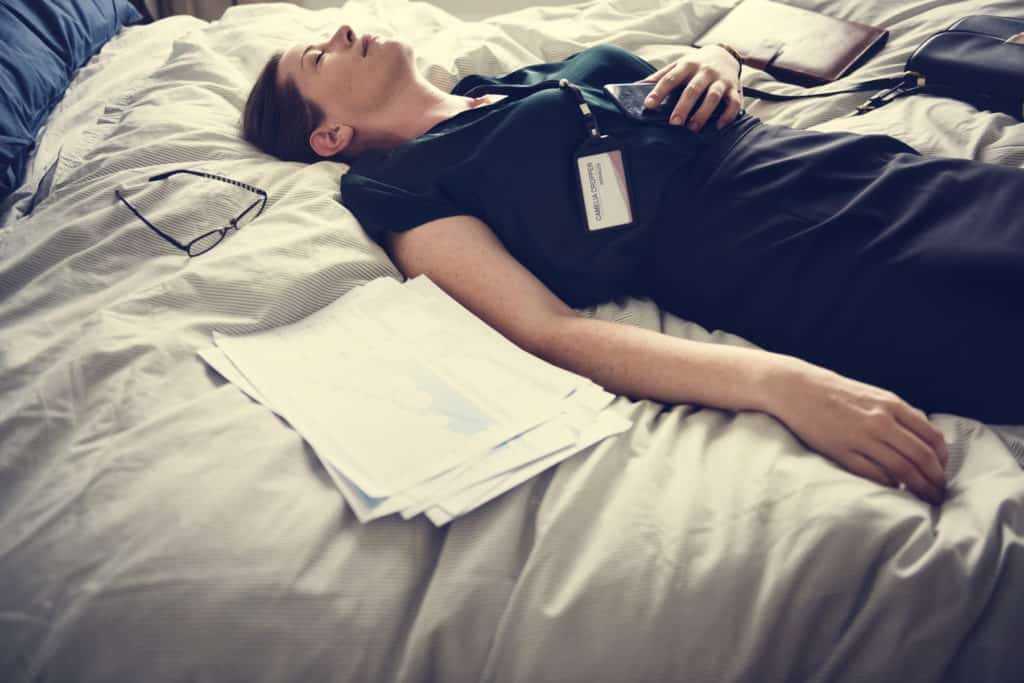 Not making enough ATP causes… (2)
Not making enough ATP causes… (2)- Slower cellular turnover
- Slower biochemical reactions
- Wasting of glutathione (an important antioxidant) which should normally be recycled
- Chronic fatigue
- Brain fog
- Mood issues
- Effects on various autoimmune diseases
- Skin rashes
- Ongoing gut issues (more about how this also contributes to the problem in a moment)
- Fibromyalgia
- Chronic fatigue syndrome
- Heart issues (especially if you’re on a statin that depletes Coenzyme Q10)
The most common reason I’ve discovered for sluggish mitochondria in my clinical nutrition practice is most often due to nutritional insufficiencies and deficiencies.
They often result from issues in your gut.
Poor digestion and absorption of nutrients mean your body has a hard time refilling its stores. Eventually it struggles to meet the incredible demand for these nutrients when intake drops.
This can happen for a number of reasons that range from:
- Chronic diarrhea (where nutrition is essentially “flushed” out of your body)
- GI inflammation (due to chronic gut dysbiosis and/or gut infections)
- Leaky gut syndrome (that triggers inflammation and motility issues)
- GI infections (wherein certain unfriendly “gut bugs” steal the nutrition before you can absorb it)
- An overly restrictive diet resulting from what appears to be an increasing number of food sensitivities (and even sometimes orthorexia)
Critical nutrients to make energy include Coenzyme Q10, Iron, Niacin, Riboflavin, Thiamin, Vitamin B5, Carnitine, Lipoic acid, and Magnesium.
What To Do If You Think You Have Adrenal Fatigue
The moral of this podcast is to make you aware that A) not everyone has adrenal fatigue even if you have the symptoms of it and B) get tested.
Testing is really the only way to know for sure if your issue is hormonal (aka. Adrenal fatigue or some other endocrine disruption) or mitochondrial.
 I can’t tell you how many clients I’ve had who are on all these adrenal supplements that don’t really make them feel better. And what’s worse is that they didn’t have adrenal issues!
I can’t tell you how many clients I’ve had who are on all these adrenal supplements that don’t really make them feel better. And what’s worse is that they didn’t have adrenal issues!We tested and discovered that they really needed to support their mitochondria and then BOOM… energy.
The best way to see what’s up with your mitochondria is by taking a urine test that looks at your levels of specific organic acids.
I personally like the Organix Comprehensive Profile from Genova (you can order it here). It’s super easy and you can do it at home.
BUT… you will need to get help to understand the results.
They aren’t in plain English and which mitochondrial support you choose (should you need it) depends on other factors like your vitamin B12 level.
So if you’ve assumed you have adrenal fatigue and you’re just doing all this stuff to support your adrenals and it’s not working, this could be why.
Getting your mitochondria fired up and functioning again can mean the difference between unending exhaustion and getting back out exercising and living an active life.
If this totally hits home and helps you, share this podcast with friends who live a life ruled by fatigue.
It could be their game changer!
Thanks for tuning in and I look forward to seeing you the next time. Bye bye!
REFERENCES
1. Mitochondrial dysfunction is the root cause of many diseases. ScienceDaily. January 26, 2017.
2. Nicolson GL. Mitochondrial Dysfunction and Chronic Disease: Treatment With Natural Supplements. Integrative Medicine: A Clinician’s Journal. 2014;13(4):35-43.
The post What If It Isn’t Adrenal Fatigue? (The Hidden Reason Why You’re Still Tired): GFS Podcast 097 appeared first on Jennifer Fugo, CNS.
24 July 2018, 4:25 am - 9 minutes 17 secondsDo Food Sensitivities Make You Sick? (Unconventional advice) – GFS Podcast 096
Do food sensitivities make you sick? It’s certainly possible.
There’s a lot of controversy around food sensitivities and if they’re even real!
If you want to know more about what they are (and what they aren’t), I have a great post you can read (HERE).
The reason I bring this topic up today is that in my clinical experience, food sensitivities have been overemphasized. And that ultimately causes some pretty alarming issues, which I hope you can avoid.
Even though tons of articles online as well as functional medicine practitioners act like you can just take these foods out and you’ll get better, that’s not REALLY true.
Removing trigger foods doesn’t solve the underlying problem.
Yes… you may certainly feel better.
But you won’t necessarily BE better.
And that’s the issue here.
With the exception of gluten which has the capacity to alter your gut’s permeability or leakiness, food sensitivities are not a root cause.
They are a symptom.
{Don’t yet know your trigger foods? CLICK HERE to order the at-home food sensitivity test I use in my practice.}
Do food sensitivities make you sick?
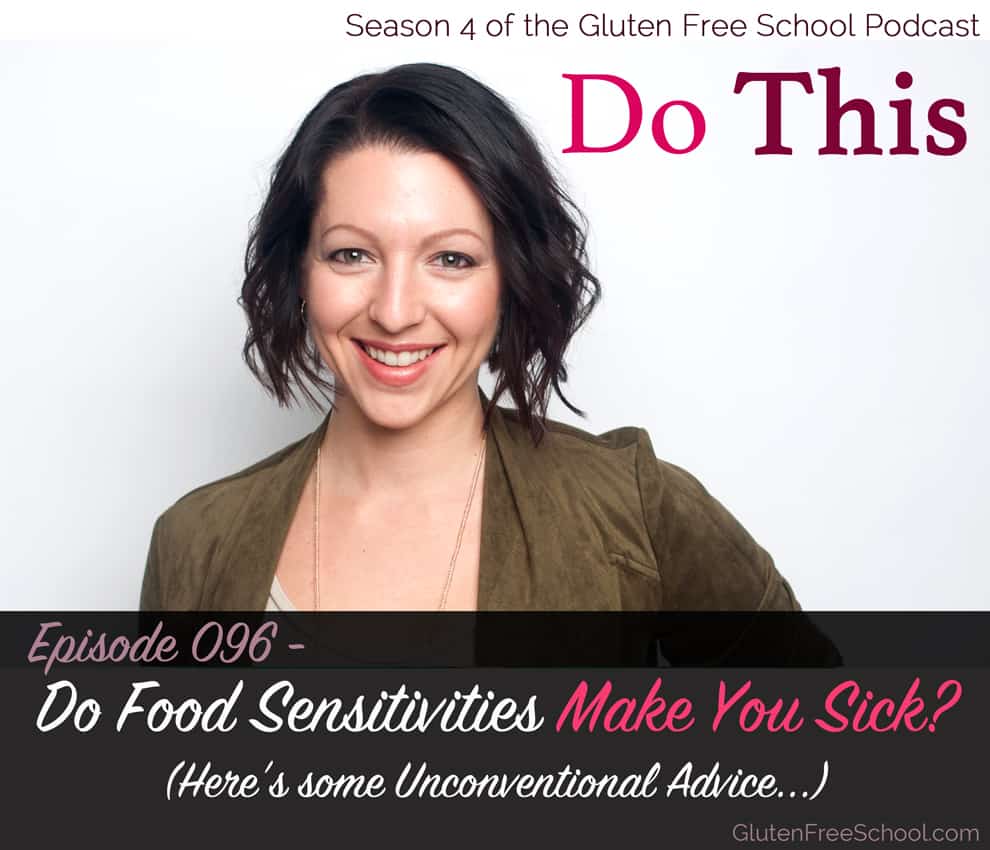 While you’re so focused on what food sensitivities make you sick, another question gets lost in the mix.
While you’re so focused on what food sensitivities make you sick, another question gets lost in the mix.You should (but may not have even thought to) ask “WHY did I end up with these food sensitivities in the first place?”
Removing them from your diet is a lot like being allergic to poison ivy. It makes sense that you would avoid the wretched plant like the plague.
Just because you aren’t exposed to it on a regular basis and don’t have any rashes right now doesn’t mean that you’re no longer allergic to it.
I highly doubt that you’d go rolling around in a giant patch of it!
The point of functional medicine, as well as functional nutrition, is to ask the questions that ultimately lead to the underlying (root cause) WHY…
Why did this happen?
What caused this system go out of balance?
My experience has shown me that few people (and few practitioners) ask WHY you became sensitive to certain foods in the first place.
And maybe you’ll say “Come on Jen… I’m sensitive to these foods because I have leaky gut.”
Right… but WHY did you end up with a leaky gut in the first place?
That’s the question that must be asked and answered.
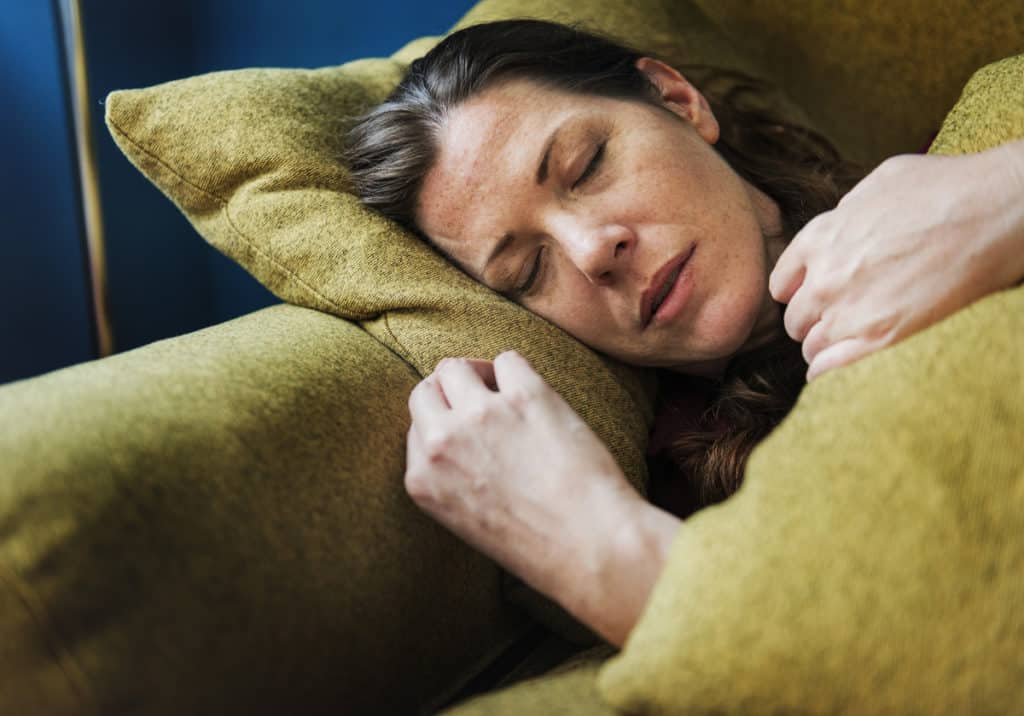 It was the leaky gut after all that allowed you to become increasingly sensitive to additional foods. Ignoring this question means that the other triggers contributing to your gut’s ongoing leakiness are still there.
It was the leaky gut after all that allowed you to become increasingly sensitive to additional foods. Ignoring this question means that the other triggers contributing to your gut’s ongoing leakiness are still there.And it’s one of the biggest reasons why “leaky gut” kits available online don’t work.
You’ve got to consider the three different gut issues that can potentially answer that question…
1. Gut dysfunction (ie. low stomach acid, slow gut motility)
2. Gut infections (even low-level infections)
3. Gut dysbiosis (ie. candida, SIBO)
And this list is by no means complete.
There can certainly be involvement of other systems that play a role in your gut issues along with lifestyle choices. Excessive stress increases gut permeability as does frequent use of NSAIDs like ibuprofen.
I go more in-depth on the many reasons for leaky gut and causes of food sensitivities in this interview with my friend Pat Flynn who wanted to talk about whether those issues are bogus. It’s a bit more technical of an interview, but if you like to geek out on this stuff, it would be right up your alley!
Are elimination diets making you sick?
 If you know that food sensitivities make you sick, then it makes total sense to avoid them. But merely avoiding them (even being 100% strict) won’t fix the issue.
If you know that food sensitivities make you sick, then it makes total sense to avoid them. But merely avoiding them (even being 100% strict) won’t fix the issue.What concerns me as a clinical nutritionist is the number of clients I’ve met with over the past couple of years who have taken elimination diets too far.
Their diet has become increasingly limited and they’ve been unable to reintroduce anything successfully. Some practitioners call this “disappearing iceberg diet” syndrome.
And it also contributes to an incredible amount of food fear and shame (because you can’t seem to figure “this” out).
I do believe that elimination diets have a place, but in my experience, they are incredibly overused (and often used for too long) because the underlying problem isn’t always food.
You typically can’t solve non-food problems with diet.
As an example, it’s why the anti-candida diet alone is not effective in helping you beat candida.
You actually need to use anti-fungal agents, support your gut to reseal, and make sure your liver’s natural detoxification systems can actually handle the process so you don’t experience “die off”.
Because the goal should always be to get back to the most varied and diverse diet possible. And that’s why ongoing food sensitivities (especially a situation where they are increasing in number) are begging for you to dig deeper.
Restrictive elimination diets used for a long time can increase the likelihood of nutritional deficiencies making it even harder for your gut to heal.
But what if it’s NOT food sensitivities?
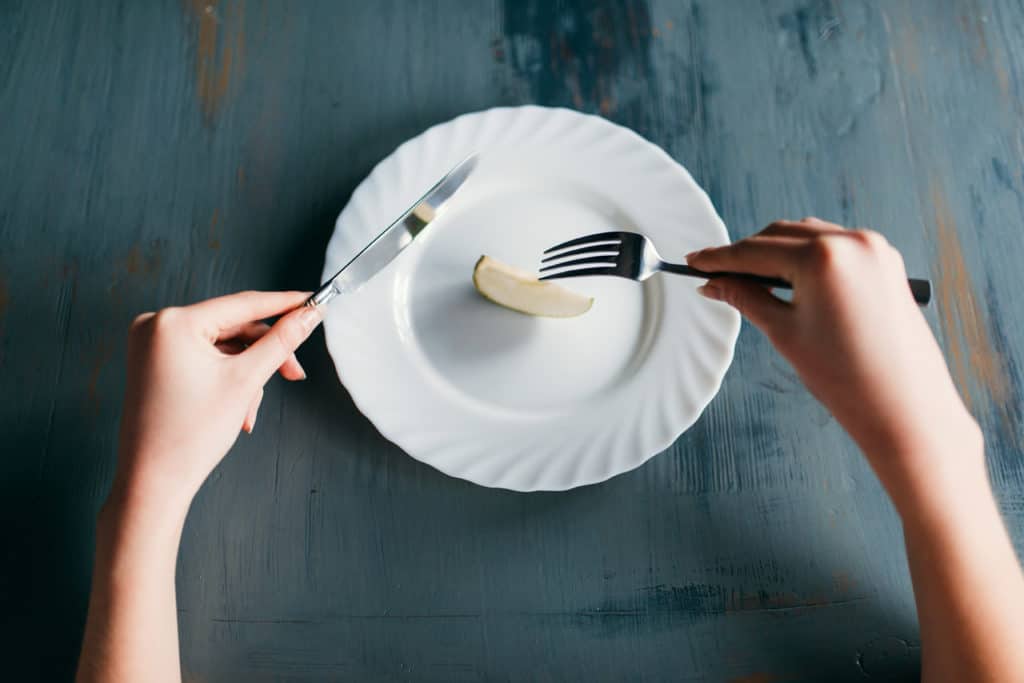 But not all symptoms that indicate a potential food sensitivity mean that you are in fact sensitive to that food.
But not all symptoms that indicate a potential food sensitivity mean that you are in fact sensitive to that food.I’ve had clients swear that they’re sensitive to different foods.
For this example, let’s pick cane sugar.
While you can be sensitive to anything, most of my previous clients who thought cane sugar was an issue actually had unfriendly gut bugs that were the root of the symptoms.
Diarrhea, gas, bloating, skin rashes, headaches, brain fog — they’re all non-specific symptoms that could be triggered by unfriendly gut bugs or a food trigger.
So if you ever find yourself utterly frustrated… not knowing what to eat because you seem to react to “everything”…
Step back and ask questions to dive deeper so that you can get to those root causes. And when you’ve done all you can do… ask for help.
Addressing your problem and ongoing symptoms from there is like stacking the deck in your favor.
Finally, you can give your body a real shot to return to a state of healthy balance so you can get back to living.
The post Do Food Sensitivities Make You Sick? (Unconventional advice) – GFS Podcast 096 appeared first on Jennifer Fugo, CNS.
19 June 2018, 4:25 am - 15 minutesHow To Make A Protein Shake (That You Won’t Get Bored Of): GFS Podcast 095
Let’s talk about how to make a protein shake at home!
I love protein shakes. Every morning, I indulge and start my day with a protein shake that is both delicious and packed full of amazing nutrition. But not everyone enjoys starting their day with the same thing in the morning.
I often get asked how to make a protein shake that won’t get boring. And that’s a great question!
Today, I’d like to break it down for you so that you know how to make a protein shake every single morning that’s delicious, full of flavor and different. Plus, I’ll share some of my favorite products that I personally use and recommend to clients.
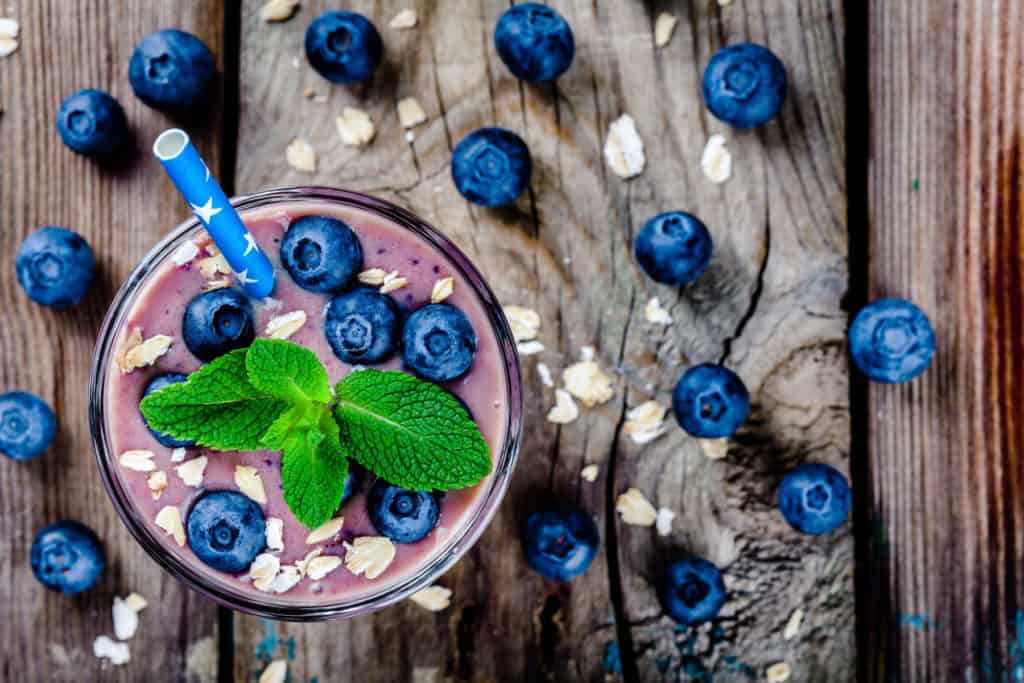 Before I go through the rules of how to make a protein shake, let’s talk about the philosophy of making enjoyable food.
Before I go through the rules of how to make a protein shake, let’s talk about the philosophy of making enjoyable food.To have variety in your meals or protein shakes means that you need to have flavor options to play around with.
For example, imagine you were a painter. Your palette only consisted of the same four colors. You’d probably get bored of painting after a certain point.
But what if you had access to twenty colors.
Or thirty!
Wouldn’t that offer you more variety?
The same concept applies to food. You’ll quickly tire of meals using the same four ingredients.
BUT if you set yourself up to have more option and flavor combinations, then you’ve hit gold.
How To Make A Protein Shake (That You Won’t Get Bored Of)
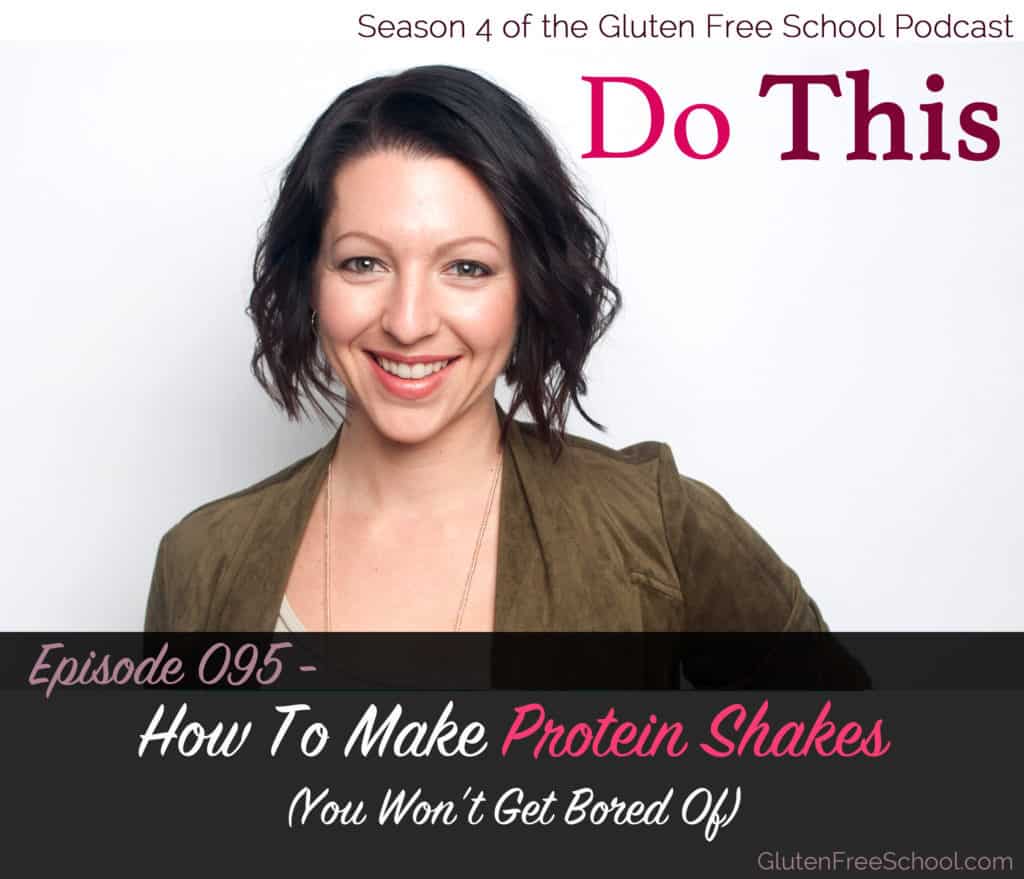 So let’s talk first about my rules for making a protein shake.
So let’s talk first about my rules for making a protein shake.Rule number one is to start your shake with a cup and a quarter of filtered cool water.
I know a lot of people feel like they need to make a shake using juice, milk, or dairy-free milk, but that’s actually very unnecessary.
Water blends up just fine and costs way less. I promise you won’t have any idea that you used water.
It also allows you to get your calories from the food you include rather than from a liquid source.
Next, you want to balance your macronutrients. Those are protein, fat, and carbs.
Your carbs can come from some sort of healthy fruit or starch sources like sweet potato or pumpkin puree.
My favorite low glycemic carb sources include berries like wild blueberries, raspberries, strawberries, and cranberries. Sometimes I use sweeter fruits like bananas, cherries, figs, peaches, kiwi, orange, pear, and apple.
Your fat can come from any number of items like avocado, coconut oil, a coconut oil/ghee mix, ghee, nuts, seeds, or MCT oil. And don’t forget about nut butters and seed butters as an easy way to a distinct flavor in your protein shake.
As for how much you can use, try ¼ of an avocado or 1 tablespoon of any oils and butters. If you use whole nuts or seeds, typically a handful is good enough.
And next, you need a healthy dose of protein. Since this is a protein shake, you’ll be getting it from protein powder. There are many different types of protein powder out there including those made from hemp, rice, pea, vegan blends, egg whites, whey, and even beef.
This is a great bone broth protein powder that I personally use + recommend in my clinical practice.
There has been recent controversy about vegan protein powders from Vega and Garden of Life containing elevated levels of heavy metals. Toxic metals like lead and arsenic from the ground where the plants grow end up in the plant. And so eating a concentrated source of protein from them increases the toxic burden that you’ll be exposed to.
I personally do a mix of protein powders so that my shake ends up being half beef protein isolate and half of a vegan formula.
This is the vegan protein powder that I love that’s free of grittiness so you don’t feel like you’re drinking sand.
I generally recommend that your protein shake should have somewhere between 20 to 25 grams of protein coming from the protein powder itself. If your current protein powder only has 14 grams per scoop or serving, you’ll need to increase how much you use. In this example, I’d add another half serving or scoop to your shake.
This is especially important if you are still on a healing journey and your body is in a state where more protein is required in order to correct and rebalance your health. You can read more about this here.
Don’t Forget About Adding Fiber To Your Protein Shake
And the last piece to this is fiber.
I typically encourage clients to add more fiber to their shakes than what’s in the powder. Sometimes there isn’t any fiber at all as is the case with most beef protein isolate formulas.
 My personal opinion on fiber is that having some is wonderful, but having too much can be overkill. As a general rule of thumb, 1 tablespoon of added fiber is a perfect boost to a protein shake.
My personal opinion on fiber is that having some is wonderful, but having too much can be overkill. As a general rule of thumb, 1 tablespoon of added fiber is a perfect boost to a protein shake. If you’re wondering what type of fiber will work best for you, I like to pick the type based on what’s up with your pooping situation. My experience as a clinical nutritionist has demonstrated to me that it actually makes a big difference.
Healthy pooping means that you poop one to three times every day.
On the Bristol Stool Chart, your poop should look likes a 3 or 4. You don’t strain or have to sit on the toilet for a long time in order to get the job done.
So if you’re pooping less than once every day, I’d consider you to be more constipated. Opt for ground flaxseed as your fiber source assuming you don’t have a known allergy or sensitivity.
On the flipside, if you struggle with loose stools or flat out diarrhea, you’re probably better off using Acacia fiber. (Here’s my favorite type.)
Nutrition Boosters You Can Add To Your Protein Shake
Taking this all a step further, there are extra ingredients that you can add your protein shake that increase the nutritional value.
Greens powders are an easy way to add flavor while increasing your intake of antioxidants. Plus they’re helpful for people (and kids) who are picky and struggle to get enough plant foods in their diet. It’s not an exact fix, but every little bit does help.
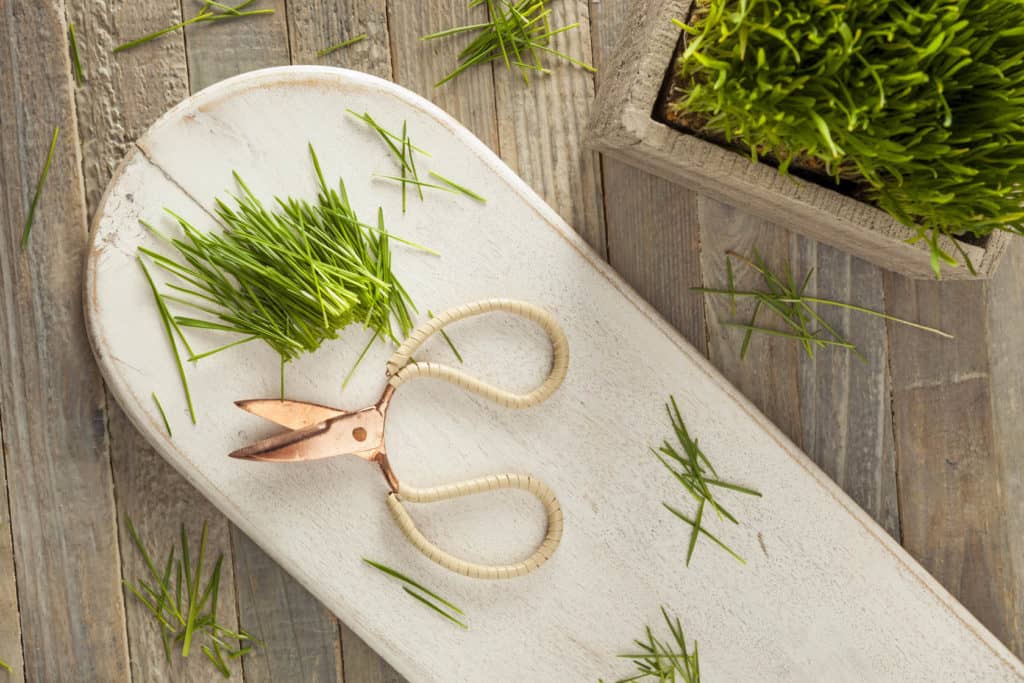 Make sure that any greens you buy are clearly marked gluten-free. Many greens powders contain grasses from wheat, barley, and other grains that could be contaminated.
Make sure that any greens you buy are clearly marked gluten-free. Many greens powders contain grasses from wheat, barley, and other grains that could be contaminated.My favorite Greens powders come from Rado Nutrition. They make four absolutely delicious flavors (chocolate, mocha, strawberry-kiwi, and mint) that take your protein shake to a whole new level.
You can use one at a time, or mix half of one with half of a scoop of another. They don’t taste like that grassy, green or earthy flavor that can be off-putting to some people.
Another favorite nutrient-boosting addition is collagen powder!
Collagen powder can be added directly to the mix before you blend. It’s completely tasteless and good for your skin, gut, and joints. I include collagen in every skin healing and gut healing protocol assuming that someone isn’t sensitive to histamines.
A good rule of thumb is to use one tablespoon of collagen powder in your daily protein shake. My personal favorite collagen peptide products come from Great Lakes Collagen.
I should mention that there is no such thing as a vegan collagen powder. Typically collagen is derived from cows or chickens. If that doesn’t float your boat, you can always get collagen that’s derived from fish.
Adding Veggies And Spices To your Protein Shake
Now if you want to get in more veggies, here’s how to make a protein shake without tasting them.
Believe it or not, frozen cauliflower or frozen zucchini are great options to start with. Zucchini literally is flavorless so you won’t even know it’s in there. Cauliflower again doesn’t impart any weird flavor at all and actually adds the froth that most people like about bananas!
Typically, I will pick one and add about ¼ to ½ cup to my shake. You could probably use fresh veggies, but I typically just buy them frozen since it’s less prep and they last longer.
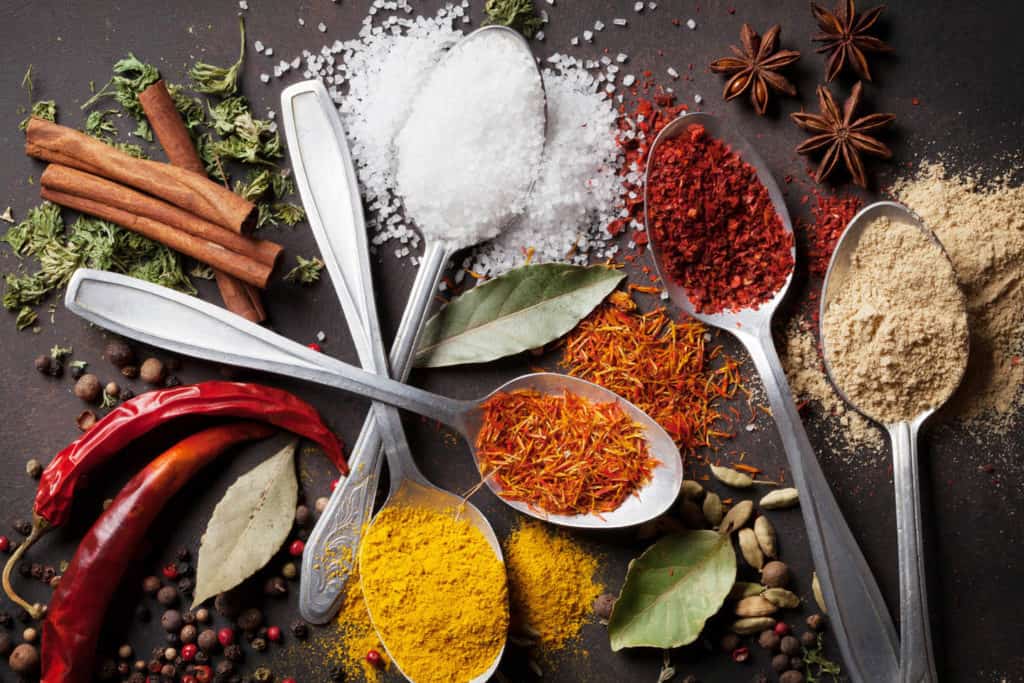 What about having fun with even more flavors?
What about having fun with even more flavors? Well, why not add spices directly to your protein shakes!
It’s an easy and quick way to vary the flavor and keep them interesting.
Some fantastic spices to add to your protein shakes include sea salt, cloves, cardamom, pumpkin pie spice, and ginger.
Vanilla extract isn’t the best option especially if it’s got alcohol in it, but vanilla powder is certainly great. (Don’t be stunned by the price tag. Vanilla has recently become quite expensive due to a shortage of vanilla beans.)
Cayenne adds a kick that can be fun mixed with cherries or blueberries.
This list of spices is by no means complete. And don’t forget to verify that the spices you purchase are free from gluten since there’s a high rate of contamination. Plus any type of vanilla extract you buy, much be clearly marked to say that it’s gluten free.
Typically I’ll pick one or two options and then do three or four small dashes or a pinch or two of those particular spices into the protein shake.
And believe it or not… but balsamic vinegar (just one tablespoon) adds a really delicious punch to fruit based-protein shakes!
Common Mistakes To Avoid When Making Protein Shakes
Are you new to making protein shakes at home? It’s not uncommon to wonder how to make a protein shake that isn’t all chunky and unevenly blended.
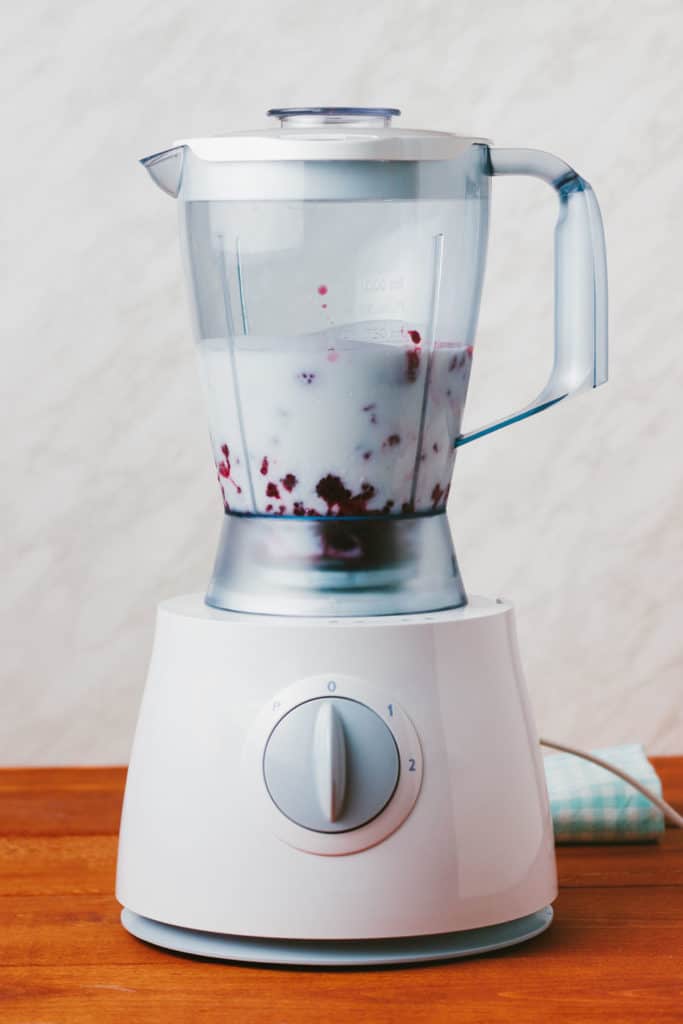 The key to how to make a protein shake that’s creamy is this — always add the water and then the fruit and veggies to the blender first. That way, they’re more likely to get fully processed.
The key to how to make a protein shake that’s creamy is this — always add the water and then the fruit and veggies to the blender first. That way, they’re more likely to get fully processed.Then you add the rest of your ingredients. And that’s when you finally blend.
Sometimes you might need to scrape down the sides of the blender and blend again. That’s typically the case with beef protein isolate powders since they stick to the sides.
Just a word to the wise — all blenders are not created equal.
A cheap $25 blender may struggle to get everything to a consistency that you’ll enjoy. There are plenty of options on the market at different price points. So find something that works for your budget and consider it an investment in your health.
And finally, do not guzzle down your shake in under 5 minutes! If you do, you’ll discover that you don’t feel anywhere near full and will end up eating more food.
To avoid this from happening, I recommend to my clients and you (the lovely listeners) to slowly sip your protein shake over a 20 to 30 minute period.
This way, your body has time to recognize the food entering it and ultimately release the hormones of satiety so that you feel full.
I hope you realize that there’s more to a protein shake than just liquid, protein powder, and fruit. You’ve got so many other options to truly make this nutritious morning meal your own.
All you need to do is start experimenting!
Homemade Protein Shake Ideas
To see how I put it all together, check out the following recipes:
Vegan Spiced Banana (aka. Eggnog) Smoothie
Dairy Free Shamrock Minty Protein Shake
My favorite Skin Rash-Smoothie Shakes great for anyone with chronic eczema and other skin rash conditions!
And hey, got some suggestions I didn’t even mention? Share them below in the comments!
The post How To Make A Protein Shake (That You Won’t Get Bored Of): GFS Podcast 095 appeared first on Jennifer Fugo, CNS.
8 May 2018, 4:25 am - 8 minutes 35 secondsBreathing Exercises To Reduce Stress For Gut & Skin Health: GFS Podcast 094
Everyone’s stressed out. And I’m willing to bet good money that until now, you’ve probably managed to muscle your way through it. You put on a strong, brave face, right?
I get it… I’ve got plenty of clients who do that daily.
Heck, I’ve used that method myself for many years in the past.
But it really doesn’t help long-term… all it really does is run up a metaphorical loan made of anger, resentment, and frustration that eventually comes due.
And we’re often never prepared for when that happens.
It’s usually at the most inconvenient time when you feel like your body and health are betraying you.
Slowly, you lose your ability to be resilient.
The smallest things set you off or overwhelm you.
You can’t make decisions, and you live moment to moment feeling like everything is getting away from you.
I’ll tell you this much from my own personal experience with stress as well as that working with clients in my clinical nutrition practice… no one escapes the Stress Landslide unscathed.
There are no pills to fix your stress problem (that affect your gut & skin)
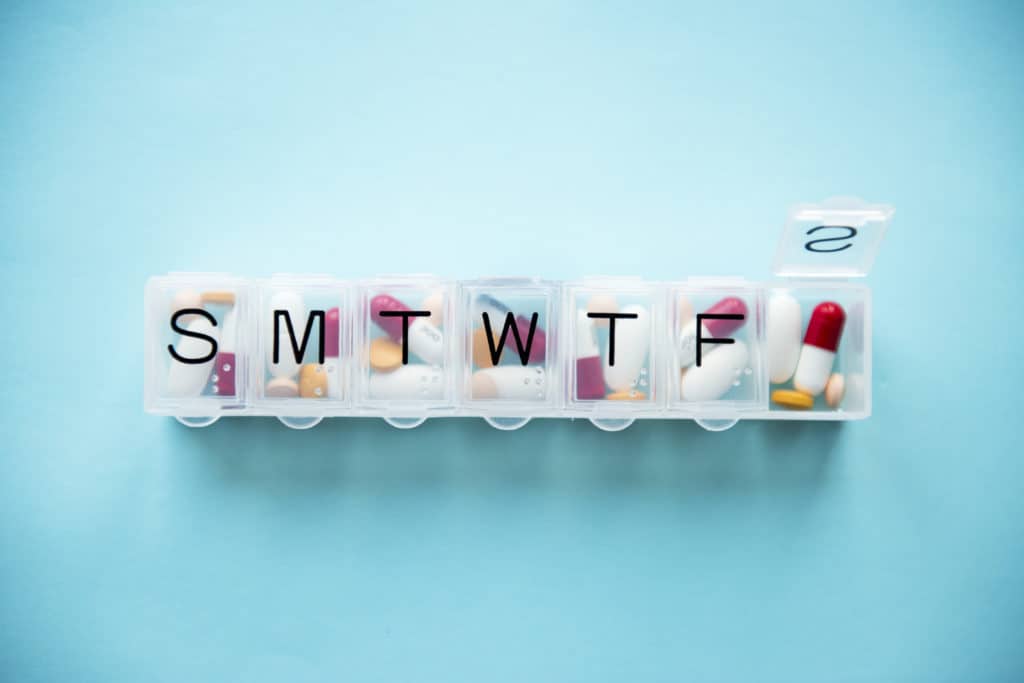 And if your idea of trying to outrun it is a pill, allow me to be the first to tell you that it’s not the best fix.
And if your idea of trying to outrun it is a pill, allow me to be the first to tell you that it’s not the best fix.See – digestive, fatigue, autoimmune, and skin issues require something more potent.
For the record, that something doesn’t come in the shape of a capsule nor a powder you can add to your morning protein shake routine.
It a prescription that requires effort and commitment on your part.
And it’s one of the least followed recommendations that I (and my fellow practitioners) give.
I’d tell you to meditate, but for most people… that just seems like too big of a commitment.
Then I’ll suggest mindfulness practices… and you’ll tell me that you feel like that’s too “woo-woo”.
So lastly I come to my favorite option → Breathing practices.
“Two minutes a day. That’s all I’m asking. Can you do that?”
“Um… isn’t there a supplement that I could take? I just feel like I’d be more compliant with that and it’s just easier.”
*SIGH*
I totally get that doing new things is uncomfortable. But making integrative changes doesn’t just mean swapping pharmaceutical pills for those packed with amino acids or herbs.
It amazes me the lengths people will go to eliminate all sorts of foods from their diets and buy expensive programs to solve their health problems.
But they are most resistant to spending two minutes each day breathing even though I’d argue that breathing exercises, meditation, and even mindfulness practices can have just as strong of an effect as a pill.
It has been proven time and again the serious, detrimental effect that stress has on your health, gut, skin, energy, immunity, and beyond.
 You literally have a second brain in your gut thanks to the interconnection of gut to brain tissue via the vagus nerve.
You literally have a second brain in your gut thanks to the interconnection of gut to brain tissue via the vagus nerve.So it makes sense that stress plays a direct role in how leaky your gut, how flared up your skin is, or how overwhelmed you feel.
And that’s why I contend that if you put aside just two minutes each day to focus on your breath, you’ll realize that you can manage your stress better, improve your resiliency, and decrease your symptoms and flares.
Your breath is directly connected to your state of mind… and if you don’t believe me, do you ever recall taking deep, slow breaths when you’re super stressed or panicked?
Nope… you’re breathing is short, fast, and rushed which is all part of the fight or flight mechanism.
That’s why spending two minutes each day practicing breathing exercises to reduce stress matters.
Breathing Exercises To Reduce Stress For Gut & Skin Health
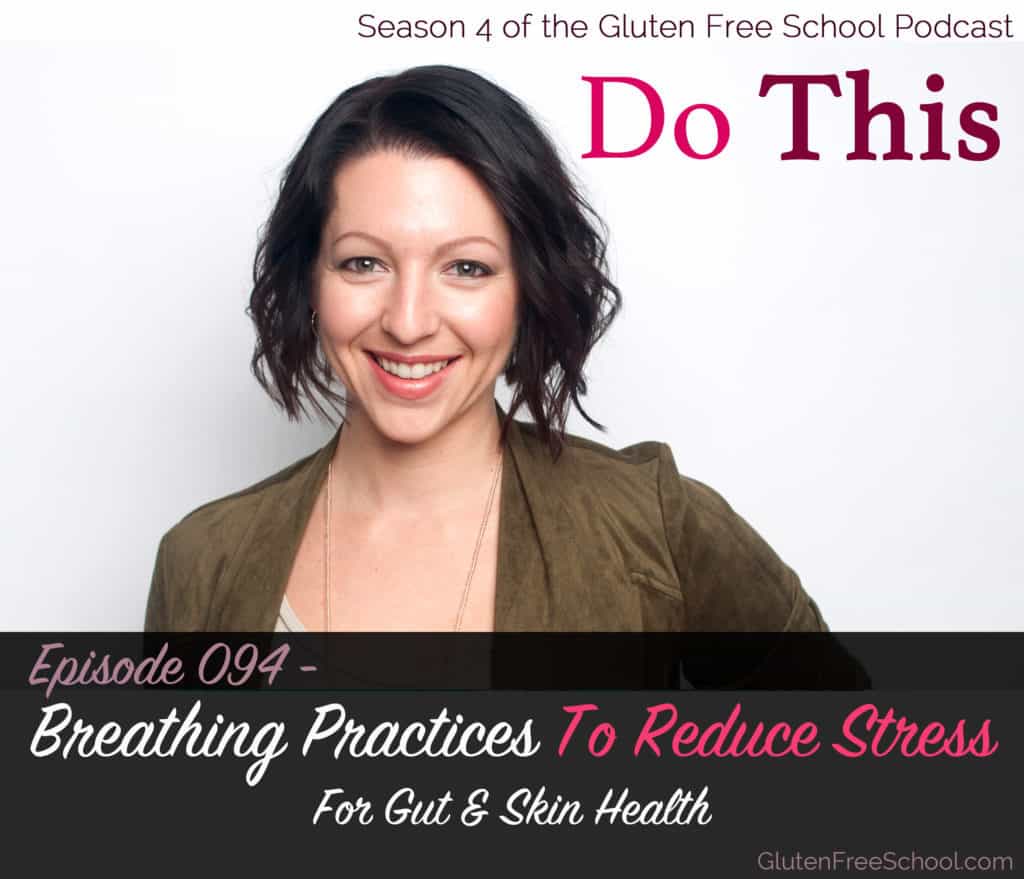 My three big reasons why I believe you should start using breathing exercises every day:
My three big reasons why I believe you should start using breathing exercises every day:1. Breathing as a means to calm stress levels becomes routine when you practice it daily.
2. You’ll discover areas of your body that you hold tension you weren’t even aware of and can start releasing.
3. You’re carving out valuable real estate in your day to relax and check in with yourself.
This is important because while doing nice things for yourself monthly — like going for a massage — is certainly helpful, it will not make up for the two minutes daily breathing that you’re NOT doing.
And if you think about it for a minute… why don’t you have two minutes a day to do this? If you’re committed as heck to doing what it takes to resolve your health… why haven’t you jumped on board yet?
I’m going to share my favorite breathing practices that I teach my clients that include the 4-7-8 breath, belly breathing, and the 5-count breath. (The video tutorials are below!!)
None of them are rocket science and they do not have anything to do with religion. Instead, they offer you a moment of peace and calm. An opportunity to tell your mind as well as your body that you are safe and can relax.
I’ve used these breathing exercises personally when I’ve been under excessive amounts of stress or have experienced a sense of panic triggered by PTSD from when I lived in New York City during 9/11. So I know the power that a simple two minutes breathing practice to reduce stress can have.
I hope that, if anything, you take a moment to consider why something so powerful, yet free seems to be the most overlooked self-care practice you can do. You are more than worth the two minutes this costs especially considering the massive benefits it can yield that no pill, supplement, or food can honestly replicate.
If you’ve started a breathing or meditation practice, I’d love to hear more about how you got started and what type of practice you do along with any benefits you’ve personally experienced. Sharing what’s helped you is always the best way to encourage and inspire others to give something new like this a try!
And when you give one of these breathing practices a try, I’d equally love to know how you felt afterward, and if you’d keep it up!
Alright… thanks for tuning in and I look forward to our next chat!
Breathing Exercises To Reduce Stress For Gut & Skin Health: 4-7-8 Breath
Breathing Exercises To Reduce Stress For Gut & Skin Health: Belly Breathing
Breathing Exercises To Reduce Stress For Gut & Skin Health: 5-Count Breathing
The post Breathing Exercises To Reduce Stress For Gut & Skin Health: GFS Podcast 094 appeared first on Jennifer Fugo, CNS.
10 April 2018, 4:25 am - 11 minutes 1 secondHow to Silence Your Inner Critic, Get Answers & Take Action: GFS Podcast 093
Your inner critic can be the most deadly opponent you face. Day in and day out, it’s willing to go to awful lengths to keep you small, feeling trapped, and never making any changes no matter how necessary.
And for that very reason, today’s podcast is one of the most personal I’ve ever recorded. If I’d heeded the cruel words of my own inner critic, I likely wouldn’t be here today… not just as a clinical nutritionist, but as a healthy person.
I listened to an inner voice… and I’m sharing what I heard that changed the course of my life and helped me win.
And hey, if you haven’t yet subscribed to the podcast CLICK HERE to listen and subscribe through iTunes!
Then take a moment and leave a review on iTunes sharing what you’ve learned and why others would benefit from tuning in!
How to Silence Your Inner Critic, Get Answers & Take Action: GFS Podcast 093
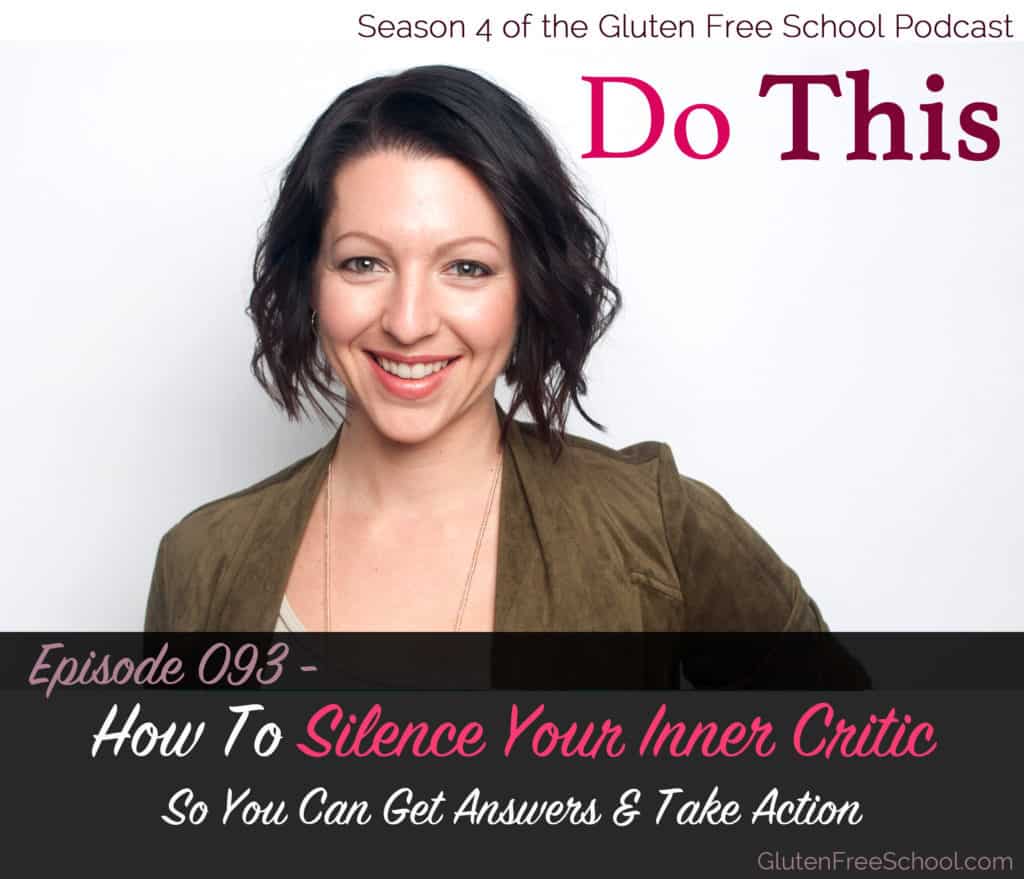
In the following podcast, I’m going to talk about:
– How I found a way to pay for expensive health care even though we’d suddenly lost 2/3 of our income.
– The philosophy that I’ve come to believe in (that actually works)
– Six reasons why you SHOULD adopt it too (if you feel really overwhelmed by your health or life)
– The exact steps I took to get my life in order and start making changes that changed everything
– Why you should embrace your inner underdog
– and much more…
Complete Transcript
“Everything is figureoutable.”
In 2009, I was ready to quit life as an adult. Not literally… but my life wasn’t headed in the direction I thought it should be.
Early in the year, my then-fiance and now husband was suddenly laid off from a fantastic job.
This meant we instantly lost ⅔ of our income.
Mind you, this was about a year before we were getting married. My husband had become very depressed and was unable to find steady work (which we didn’t know at the time would actually last for about 4 years!).
During the summer of 2009, I noticed some really intense health problems capped off by terrible fatigue. After trying to figure out what was going on through my diet and failing, I hired a functional nutritionist. That’s when I was diagnosed with severe candida overgrowth and adrenal fatigue which I’ve talked about before HERE.
Lest we forget that I was on a really tight budget, this process was quite costly. Seeing a practitioner outside of insurance can be expensive. Supplements can be also expensive. Having to buy all organic gluten-free food is expensive.
I know that some people say that one’s concept of what’s expensive is tied to their priorities, but when you’ve lost ⅔ of your income, yeah… it’s going to feel expensive and overwhelming as the bills pile up.
So rather than crawl into a hole and give up, I looked at my situation as a challenge. And somehow I came to the realization that my problem existed simply because I didn’t have a viable solution to it YET.
My Inner Critic or My Health
 And that’s where the phrase “Everything is figureoutable” comes in.
And that’s where the phrase “Everything is figureoutable” comes in.I can’t take credit for this saying. I first heard it from business coach Marie Forleo.
I realize that I could have taken a much different path.
I could have played the victim and convinced myself that someone put the evil eye on me (or that God was punishing me). Then I’d probably have spent my time complaining to everyone I knew about it.
Or I could have succumbed to my own inner critic that kept saying “you can’t afford this. You’re stupid and foolish for wasting money on this.” And then just whined that I couldn’t afford to do anything to care for my health and done absolutely nothing.
But I didn’t end up choosing either of those paths…
I can’t quite say why I didn’t, but I recall thinking to myself at the time that if this was a challenge, then a solution must exist. And that’s when I started digging.
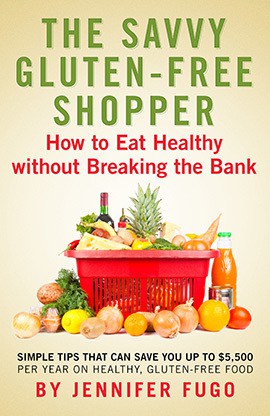
The Savvy Gluten-Free Shopper: How to Eat Healthy Without Breaking the Bank
As a result of a relentless pursuit of a solution, I found answers… and plenty of them.
Not only did I overcome my adrenal fatigue and candida, but I went on to turn what I discovered into my book “The Savvy Gluten-Free Shopper: How To Eat Healthy Without Breaking The Bank”. It was so popular after being released that it became an Amazon best-selling book that made it all the way to the top 5 of the Gluten-Free Diet list (which is very competitive).
The point of this podcast is to show you that there is always a way forward.
There’s always an answer.
But you have to be willing and hungry enough (and one could argue that you must be sick enough) to want to change. That the discomfort of making the change and seeking a solution is less painful than continuing to do the same thing or doing nothing at all.
I realized that seeing the problem in front of me as a challenge and finding a solution is a mindset shift. But it’s one that’s infinitely worthwhile in the long haul for six reasons.
Six reasons to adopt the “Everything is figureoutable” mindset
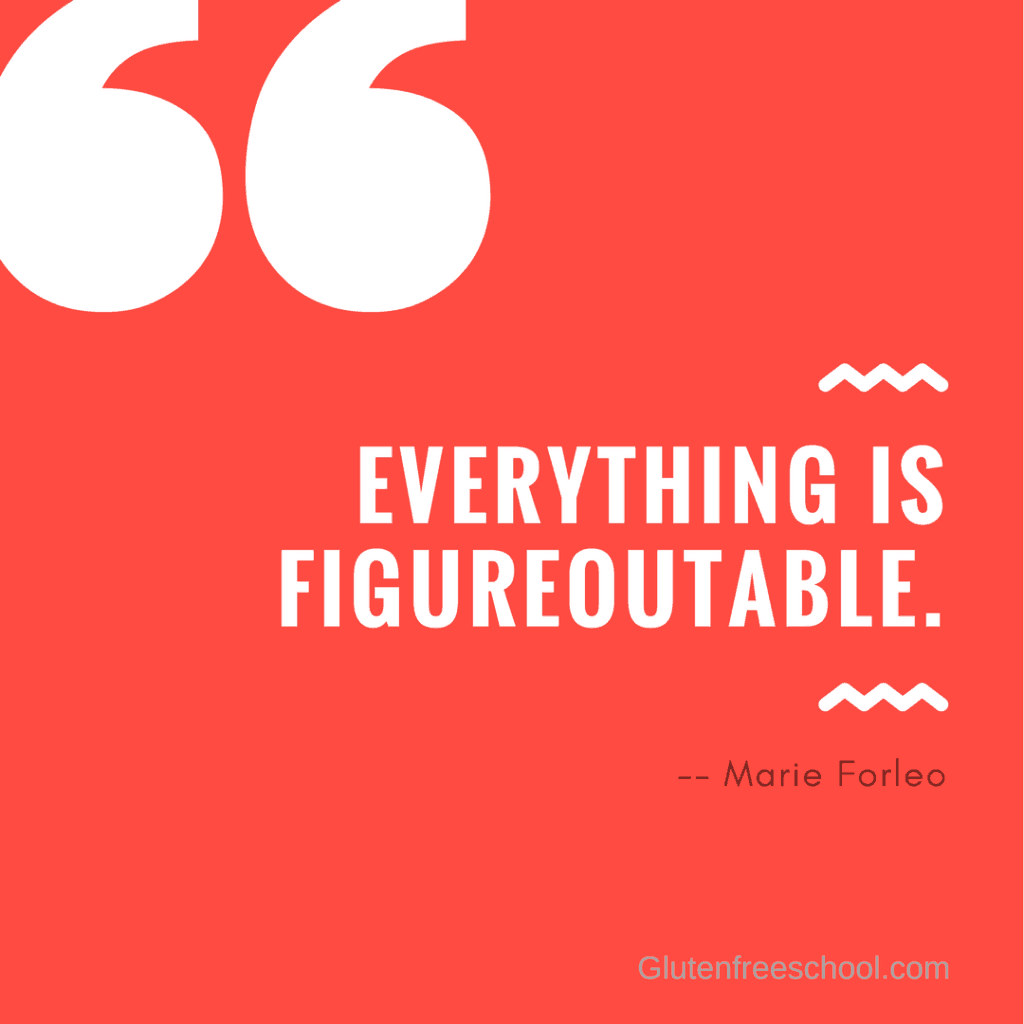 1. It gets you out of a victim mentality. You’re no longer beaten down by life or your health issues.
1. It gets you out of a victim mentality. You’re no longer beaten down by life or your health issues. 2. It helps you define what your health philosophy is and what you’re okay with (and what you’re not) in order to get better.
Maybe you’re no longer content eating meat from animals exposed to antibiotics. Maybe you want to find more natural ways of addressing your health through herbs or vitamins rather than pharmaceutical drugs. Or maybe you want to focus on meditation and affirmations to help you heal.
The truth is, your health philosophy is key to deciding what steps you’ll take in the pursuit of your own answers.
3. It also encourages personal responsibility. You acknowledge what you’re doing to sabotage yourself. And you also identify what is and is not in alignment with your health philosophy.
4. It helps you find the inspiration to take steps and give things a try that may be outside of your comfort zone.
5. It breeds tenacity that helps feed your drive to see the pursuit of a solution through to the end.
6. And lastly, it oftentimes changes you for the better.
I do believe that adversity breeds character. Who I am today as well as the clients I’ve worked with searching for their own health answers have all changed in measurable ways that allow us to better enjoy and be present to life.
How to get started making this mindset shift
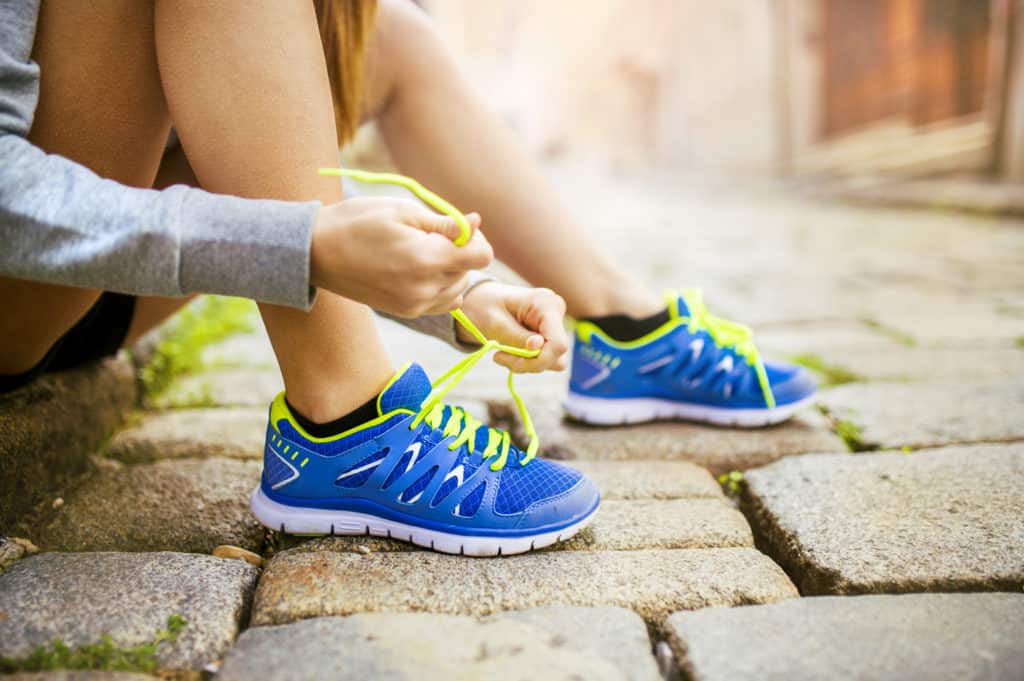 To get started, clearly identify the problem in front of you.
To get started, clearly identify the problem in front of you.List what you’ve tried (even if it didn’t work), what you believe is holding you back (maybe it’s fear or money or judgment from others), and what excuses you make to avoid getting started.
Get clear on your pain. What are you missing out on now? And then imagine what you will miss out on if this situation continues to get worse?
Extrapolate on this… maybe it means you’ll be so sick that you’ll no longer be able to work and your marriage will deteriorate. You’ll miss out on helping care for your kids or grandkids.
Brainstorm what a perfect, but reasonable solution would be for you.
Identify what you are and aren’t willing to do to get there. Be honest with yourself (and this is really important). That includes seeking help when you’ve gone beyond your scope of knowledge and know-how. Someone who knows more than you can help you be more efficient and effective when you hit a wall. If you’re not seeing significant progress after a couple of months, it’s time to call in an expert.
Make a list of steps that you can work on each week and organize them in a way that makes sense for you to see change. Each week, work on 2 or 3 of those steps. By putting them slowly into practice, they come to feel more natural and less like you’re just juggling a lot of “things to do”.
And then get started. Baby steps are key. They don’t need to be perfect. And they most certainly add up… especially over the weeks and months ahead.
Embrace Your Underdog Status To Beat Your Inner Critic
 Along the way, you may hear your own inner critic whispering horrible nothings in your ear that are meant to get you to stop making changes.
Along the way, you may hear your own inner critic whispering horrible nothings in your ear that are meant to get you to stop making changes. To stop looking for answers.
To stop trusting that a solution is not only out there, but possible for you.
At that moment, take a step back from all the self-judgment and see yourself as an underdog.
More specifically, you’re an underdog to your own inner critic.
Your inner critic has spent years… maybe even decades detailing all of the many ways you suck or fail at life. It doesn’t want you to make changes. It wants you to stay exactly where you are… comfortably suffering.
In the wise words of Jason Kelce, Eagles’ center who dressed as a Mummer and spoke during their 2018 Super Bowl Champion parade — “An underdog is a hungry dog.”
You have to be hungry for that change and the answers that come with it. Hungrier than your inner critic.
Ready to let go of that inner perfectionist and just get started (no matter how messy the path forward is).
And ultimately committed to believing deeply that there is a solution to whatever is facing you… you just haven’t found it yet.
I hope this insight is helpful no matter where you on your journey!
Leave a comment on this podcast about what resonates with you!
The post How to Silence Your Inner Critic, Get Answers & Take Action: GFS Podcast 093 appeared first on Jennifer Fugo, CNS.
13 March 2018, 4:25 am - 10 minutes 32 secondsHow Long Does It Take To Get Better?: GFS Podcast 092
I never wondered how long does it take to get better when I figured realized I was sick.
Back in 2007, I felt like I was an elderly person. I didn’t feel like myself and knew inside that something was very wrong. Doctors told me that I was fine. Maybe I needed some B vitamins or to work out less…
But none of that answered the question about why I had this hodge-podge of symptoms that didn’t make any sense.
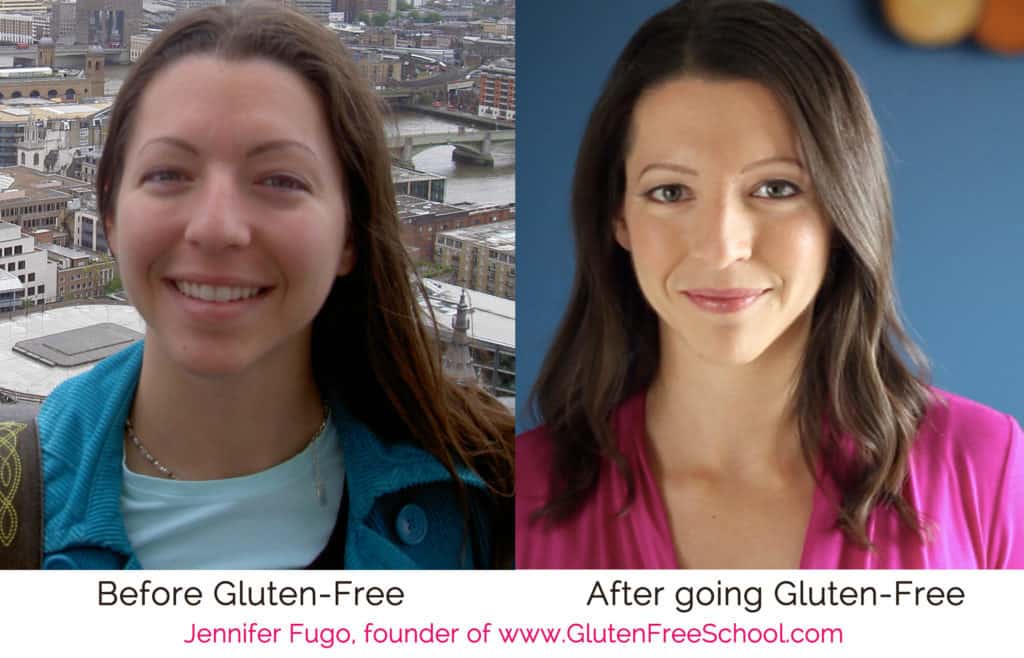 My before and after photo is pretty stunning for most to see because I had so much inflammation in my face before figuring out what was going wrong.
My before and after photo is pretty stunning for most to see because I had so much inflammation in my face before figuring out what was going wrong.Years later, I’m often asked questions about my own healing journey.
“Jennifer, how long does it take for ______ to get better?”
And I intentionally approach this question with caution for one specific reason — the person asking usually wants to assume that my underlying root causes and healing timeline will be the same for them.
That’s not the right way to go about looking at your health and subsequent healing. And frankly, it’s potentially detrimental to your long-term success.
People can have the same symptoms, but have very different underlying root causes.
You can also have the same underlying root causes, but heal at very different rates.
I say this to point out that this is where someone who is chronically ill can get into trouble. It sets an unhealthy expectation based on an unfair comparison.
See, I had no idea where the former sick me would end up. I didn’t have any expectations of weight loss or stopping my daily headaches. I just wanted to have more energy and not constantly be so sick to my stomach that I would be moments from crapping my pants.
It took me 3 months to lose 10 pounds of inflammation weight… and another 3 to lose almost another 10.
By no means would I categorize that as fast.
Sure, I noticed a big improvement in my urgency to use the bathroom because I’d removed the food triggers. But beyond that, it took months to see the many scaly rashes disappear.
So if you want to know what the lesson here is… be unrelentingly cautious in how you manage your expectations.
How long does it take to heal your leaky gut?
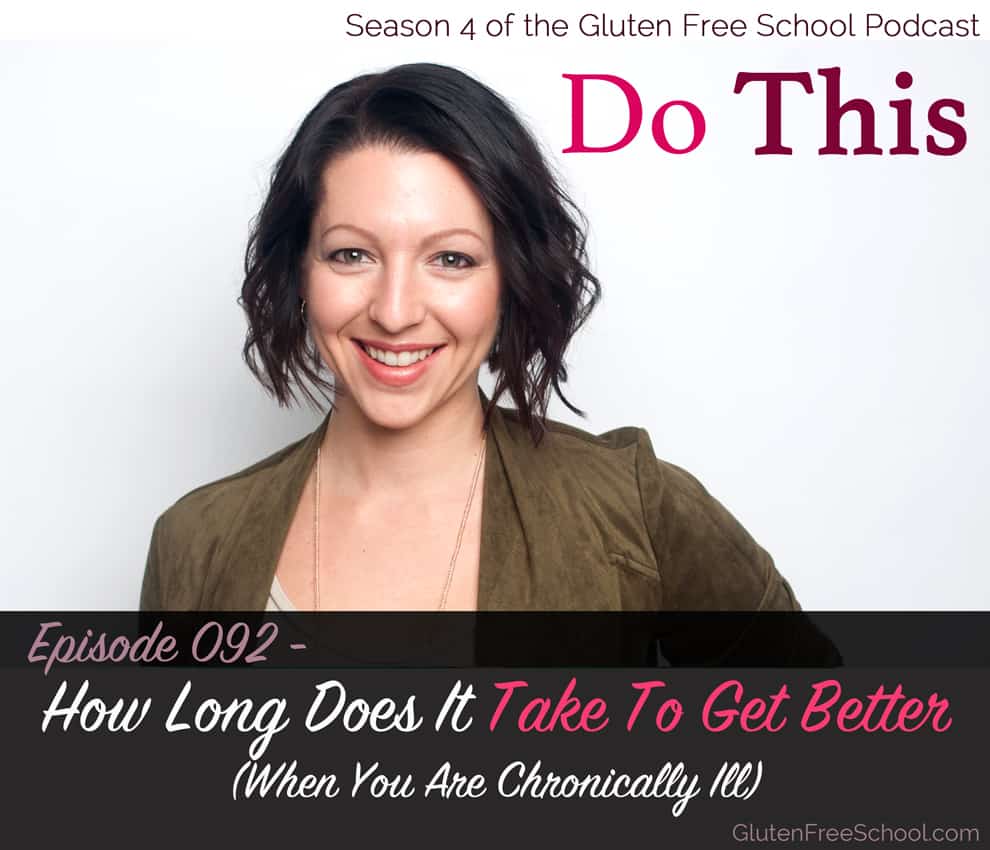 Resolving leaky gut means you know all the factors that are compromising gut health in the first place.
Resolving leaky gut means you know all the factors that are compromising gut health in the first place.Do not assume that just because your symptoms are identical to someone else that you have the same exact issues.
If your case isn’t too complicated, the average time to resolve leaky gut is 6 to 8 weeks.
If you’re not getting better, you’ve probably missed something.
That’s why those DIY leaky gut programs often don’t work. I’ve talked about this on the blog before (HERE). They aren’t set up to address gut infections.
If you’ve got SIBO, it can take a long time to heal and many different trial and error treatments.
One factor that’s key to know is if you have hydrogen or methane-dominate SIBO. Here’s another excellent piece walking you through the many possibilities to consider.
How long does it take to rebuild healthier skin when you’ve got eczema?
 Skin is a low priority organ. So your body will steal nutrients away from it in order to maintain other parts of your body.
Skin is a low priority organ. So your body will steal nutrients away from it in order to maintain other parts of your body.Skin is formed from the innermost layers slowly working themselves out. It takes 4 weeks on average just for that newest layer to make it to the top.
If triggers still exist in the gut or you’ve got nutrient insufficiencies, you have to be on a serious road to recovery before healthy new skin is going to be formed.
You’ve got to have a higher protein intake than normal because your body is doing the heavy lifting to rebuild what’s been historically compromised.
I didn’t see a significant improvement in my skin until about 3 months into my healing protocol. At 6 months, the flares cycle stopped. At about 9 months, I noticed the skin becoming much more normal and calm. And after about 12 months, I had the skin at about 85% healed.
I used THESE RECIPES to help me start my day with the right nutrition while avoiding some of the most common trigger foods!
How long does it take to lose weight?
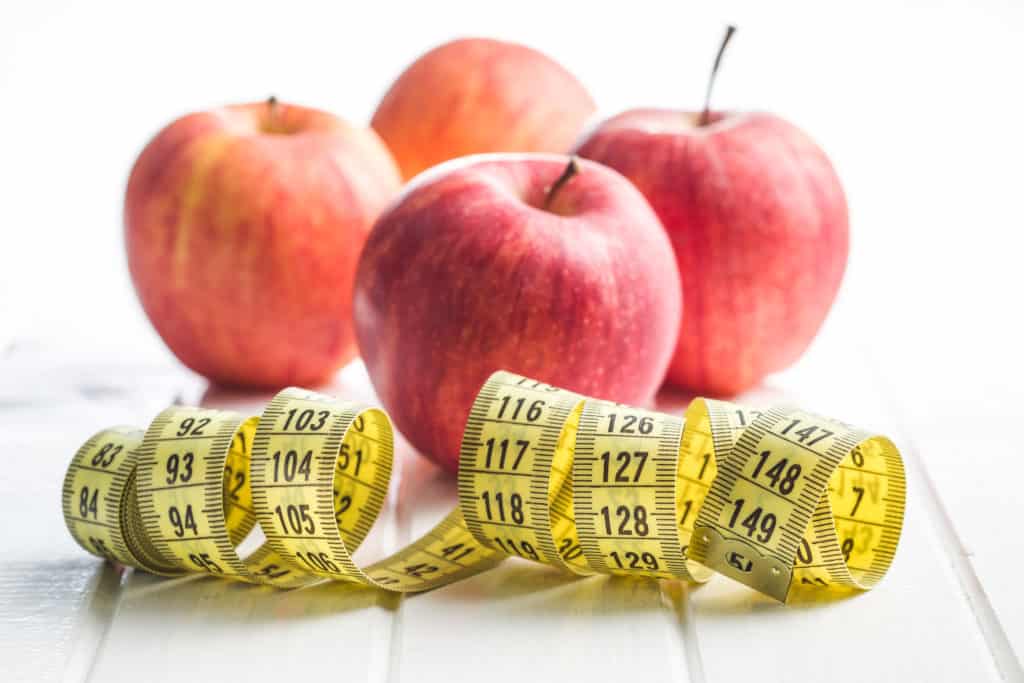 You cannot fight your thyroid.
You cannot fight your thyroid. If that’s out of balance, you’ll need to address that first. So if you’re struggling with hypothyroidism or Hashimoto’s, you really need to get that under control first.
Your thyroid is in charge of regulating weight loss and weight gain.
You cannot out-exercise and out-diet your thyroid.
If you’re overweight, the average healthy weight loss is between .5 and 1lb per week.
If you’re obese, the average healthy weight loss is 1 to 2lbs per week.
You may see an initial weight loss drop due to the removal of inflammatory foods or exposures. After that, don’t be surprised if weight loss slows to the average healthy pace I’ve just mentioned.
Things to keep in mind…
- Your body will heal at its own pace based on the unique factors that make up who you are.
- You should never compare your healing journey to someone else’s.
- When you feel disappointment, find out first if your reaction is reasonable. (Oftentimes, it’s not.)
- For every year that you’ve been sick, it can take one month’s worth of healing (but this is not a hard rule). So if you’ve been sick for 10 years, you should expect to be working hard for at least 10 months.
- Every step has to be taken in an intelligent way.
- You have to be consistent with the actions that you take.
- And if you’re still struggling, reach out for help so that you can get on the path to feeling better sooner.
The post How Long Does It Take To Get Better?: GFS Podcast 092 appeared first on Jennifer Fugo, CNS.
13 February 2018, 5:25 am - 9 minutes 36 secondsMake New Years Resolutions That Stick (So You Nail Your Goals): GFS Podcast 091
My advice on how to make New Years resolutions is unconventional. Simply put — don’t make any.
I’m not advocating for you to do nothing. Instead, I think there’s something much more powerful that will actually get the job done.
Allow me a moment to explain…
Many years ago, I was living in a tiny tropical town by the Caribbean sea in Costa Rica. I found this surf shop to rent a bike from while I was there and got into a conversation about surfing with the owner.
 The owner taught surf lessons to people like me with no experience whatsoever.
The owner taught surf lessons to people like me with no experience whatsoever.But I always thought that surfing was dangerous. Living over an hour from a large city in a country where I couldn’t speak the language, I could imagine many ways that surfing could totally go awry.
Every day I’d pass the surf shop. The owner would ask me if I was ready for a surf lesson. I said no and had some excuse.
“I’m not strong enough to get up off the board.”
“I don’t want to get all scraped up if I fall and hit the reef.”
This went on for 2 weeks. I had just about every excuse in the book.
Each time, he’d address and counter my excuse so that I couldn’t use it anymore.
Finally, I ran out of excuses and went for a surfing lesson.
Balancing on the board as I surf towards the beach on a small wave, I realized that I was having some of the most fun in my life.
It was an amazing feeling and I wish I’d not wasted all that time allowing excuses to have more of a say over what I did than me.
Why You Shouldn’t Make New Years Resolutions
I share this because every year people feel compelled to make new years resolutions with the hope that maybe… just maybe THIS year this list will help them change.
Well, the reality is that most people don’t accomplish very much.
 It’s estimated that a whopping 80% of resolutions are a total bust for various reasons. Take the gym… come January it will be packed! Around 3 to 4 weeks into the new year, the enthusiasm dies off, life goes back to “being too busy”, and the gym becomes a monthly expense on your credit card rather than a place you go to workout.
It’s estimated that a whopping 80% of resolutions are a total bust for various reasons. Take the gym… come January it will be packed! Around 3 to 4 weeks into the new year, the enthusiasm dies off, life goes back to “being too busy”, and the gym becomes a monthly expense on your credit card rather than a place you go to workout.So if you know that your resolutions won’t help you make changes, then why write them out? Why spend even a moment thinking about them?
Because everyone loves a clean slate and that’s ultimately what New Year’s Day is.
A new chapter to begin.
I gave up on new years resolutions years ago because they’re pointless.
They’re always well-intentioned, but the act of writing them down isn’t the reason you’ll change at all.
A resolution is defined as a “firm decision to do or not to do something.” That’s all well and good, but what a resolution doesn’t address is the stuff that gets in your way.
You know what I’m talking about — those things called “excuses”.
How can you seriously make a firm decision to do or not do something and then just do the opposite like it wasn’t that important in the first place?
Because the excuses bear more importance and more weight than the firm decision itself.
They’re easier to go along with than dealing with the discomfort of sticking with your resolution.
Don’t Make New Years Resolutions (And Do THIS Instead)
That’s why I’m saying this year — don’t make new years resolutions.
Instead, make an excuse list and start busting it one by one just like my surf instructor did for me.
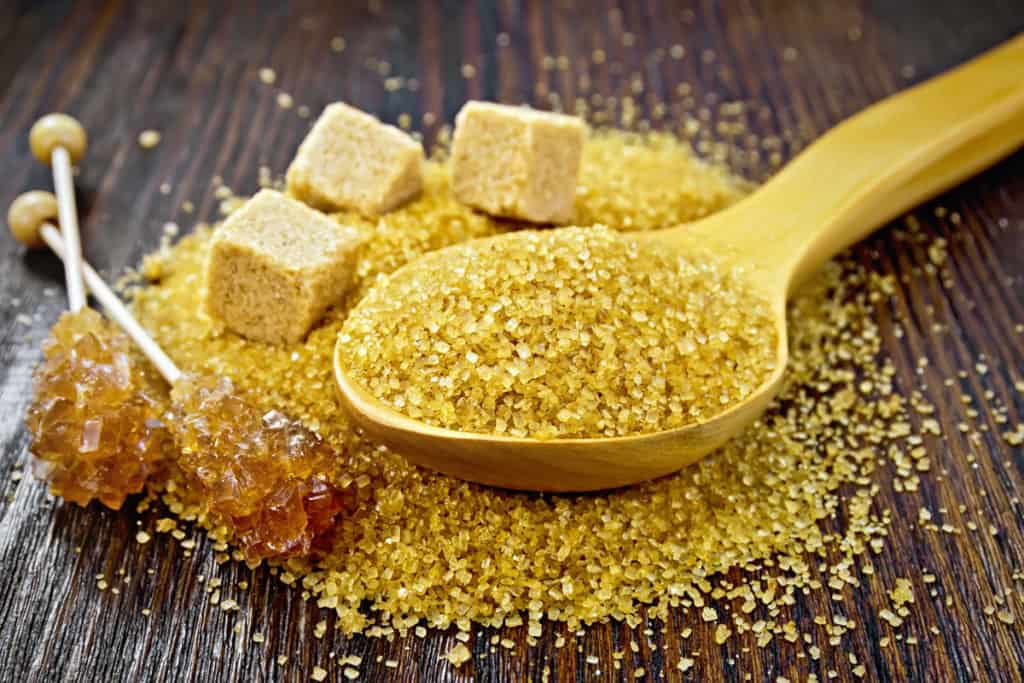 Until you identify the excuses that act as mountains in your life that totally impede progress, it’s entirely unlikely that you’ll stick with any resolution for more than a day or two.
Until you identify the excuses that act as mountains in your life that totally impede progress, it’s entirely unlikely that you’ll stick with any resolution for more than a day or two.Take sugar — since that’s the biggest resolution that I hear about in my line of work as a clinical nutritionist.
Sugar’s a big resolution for many people because they want to get healthy.
“I’m going to give up sugar this year”, you say to yourself… except when it’s someone’s birthday or you got a promotion or you had a bad day. Or any number of reasons why it’s okay to cheat.
And for the record, all of those “reasons” you tell yourself to justify not following a resolution or goal — they’re all excuses.
That’s where you need to start if you honestly want to see and feel real change in your life.
How To Actually Change (By Making An Excuses List)
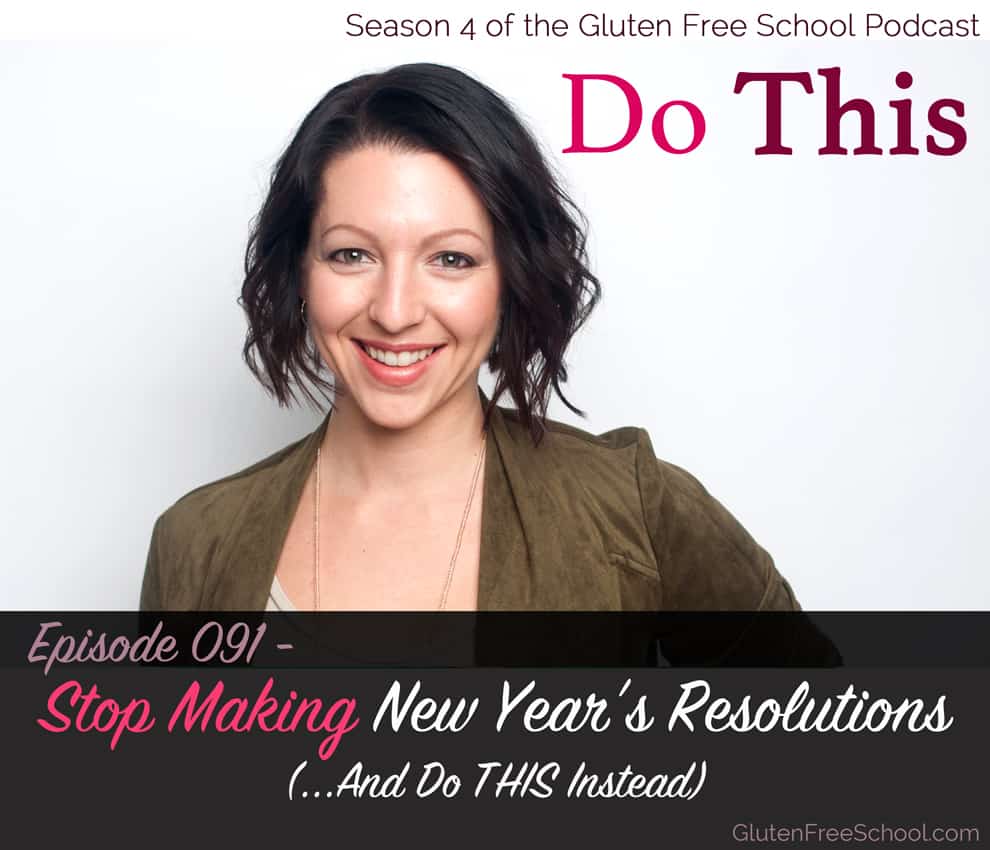 So if you want to make a New Year’s Excuses (To Tackle) list… here’s how to do it!
So if you want to make a New Year’s Excuses (To Tackle) list… here’s how to do it!First, pick 3 big things you want to change. Maybe these are the points that you’d normally write down as your new years resolutions.
Then under each one, start writing out every conceivable excuse you’ve made in the past or could imagine yourself using.
When you’re done, take a moment to marvel at that list because it’s usually pretty long.
Then go through and ask yourself line by line how true each excuse is.
Notice how much control each excuse has over you… and how you allow it to alter your behavior overriding what you know is best for yourself.
Post the list somewhere visible and easy to see so that you see it all of the time.
Each week tackle 1 or 2 excuses. Once you’ve busted them, cross them off of your list.
As you go deeper and deeper into the list, you’ll find that sticking to the resolution becomes a lot less difficult.
This is ultimately about taking back your control in life. Excuses render you feeling incredibly safe and (unbeknownst to you) powerless.
How To Stop Eating Sugar In The New Year
Back to the bit about sugar for a moment… if you know you went way overboard with sugar over the holidays (or maybe that is pretty normal for you), then breaking your sugar habit might be on your resolutions list, right?
But I’m willing to bet that you’ve tried to break up with your love of sugar before and it hasn’t gone so well. You’re good for a few days… maybe even a couple of weeks, but then something happens and you fall right back off the wagon.
 A whole year goes by and you’re back to “I really need to stop eating all of this sugar”. This pattern is sort of like a broken record.
A whole year goes by and you’re back to “I really need to stop eating all of this sugar”. This pattern is sort of like a broken record. But I want you to know that there is a way to make it stop. I know that it’s possible thanks to my many years of experience both as a clinical nutritionist and personally ditching sugar.
I’m actually teaching a super interesting webinar on sugar addiction soon.
Part of what makes it so difficult to break free from is that YOU aren’t at fault for your addiction to sugar
You heard me right… it’s not your fault.
Yes, sure… you chose to eat all of those sugary items, but the reality is that food companies have done a lot of things to put you in the position that you’re in. They’ve used science against you and learned how to override your willpower so you can’t ever say no.
I think you’ll really enjoy this webinar –> REGISTER HERE … it’s totally free to join me!
I call it the “Gluten-Free Sugar Addict’s Guide to Break Up With Sugar… For Good.”
It kicks off at 7pm ET on Tuesday, January 9, 2018.
(To be entirely clear, I won’t hold this webinar again this year, so now is the only chance to tune in!)
When you get your hands on simple tools like what I’ll share, it makes beating back those excuses around why you eat sugar so much easier.
That’s all for now… so forget about the resolutions and this year, tackle your excuses. I’ll bet you’ll be light-years ahead by the end of this new year compared to where you’re starting now.
Wishing you a lovely and action-packed new year filled with lots of excuse-busting! Who knows… maybe you’ll finally do something you’ve always wanted to do, but were afraid to!
Thanks for joining me and I’ll see you the next time! Bye bye!
Make New Years Resolutions Podcast SHOW NOTES
Gluten-Free Sugar Addict’s Guide to Break Up With Sugar… For Good → Grab your FREE seat here
CLICK HERE to listen and subscribe to the podcast through iTunes!!! Then take a moment and leave a review on iTunes sharing what you’ve learned and why others would benefit from listening in as well.
The post Make New Years Resolutions That Stick (So You Nail Your Goals): GFS Podcast 091 appeared first on Jennifer Fugo, CNS.
2 January 2018, 5:25 am - More Episodes? Get the App
Your feedback is valuable to us. Should you encounter any bugs, glitches, lack of functionality or other problems, please email us on [email protected] or join Moon.FM Telegram Group where you can talk directly to the dev team who are happy to answer any queries.
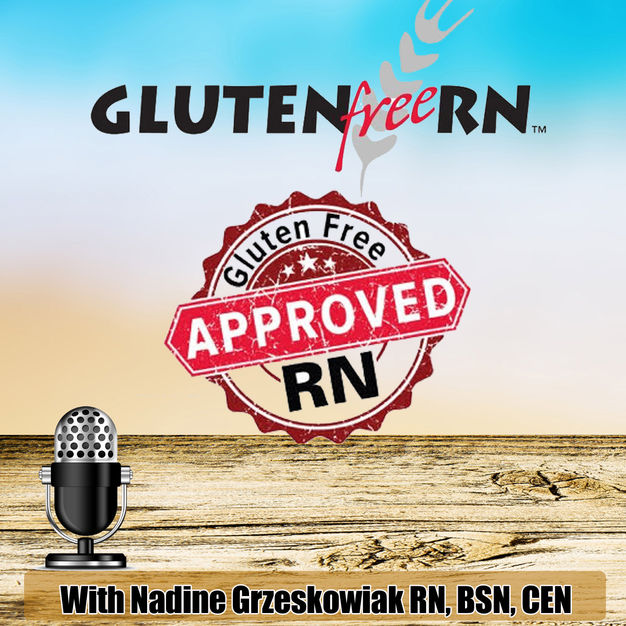 Gluten Free RN
Gluten Free RN
 Easy Paleo, Gluten & Dairy Free Cooking
Easy Paleo, Gluten & Dairy Free Cooking
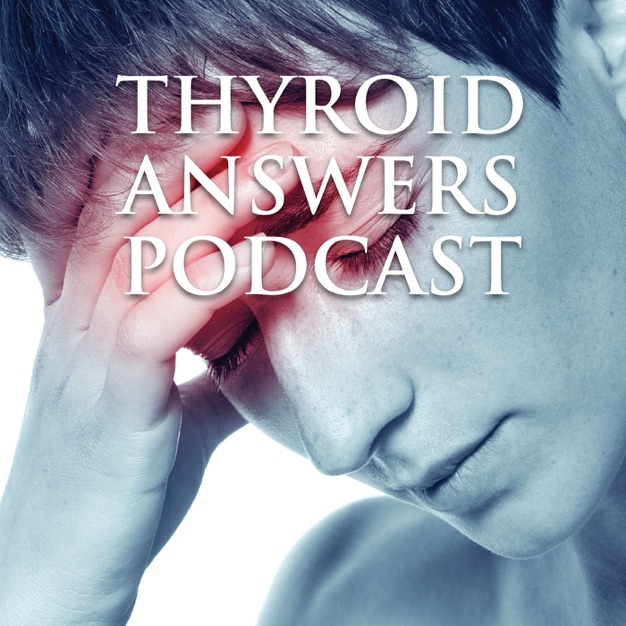 Thyroid Answers Podcast
Thyroid Answers Podcast
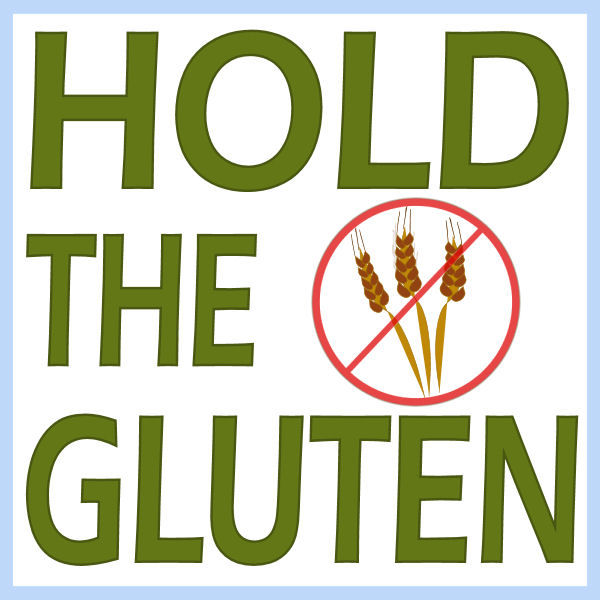 Hold The Gluten
Hold The Gluten
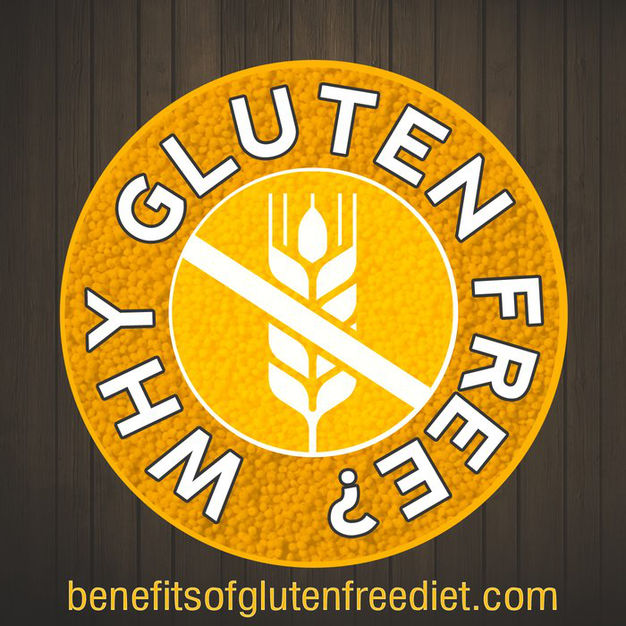 Gluten Free Podcast
Gluten Free Podcast